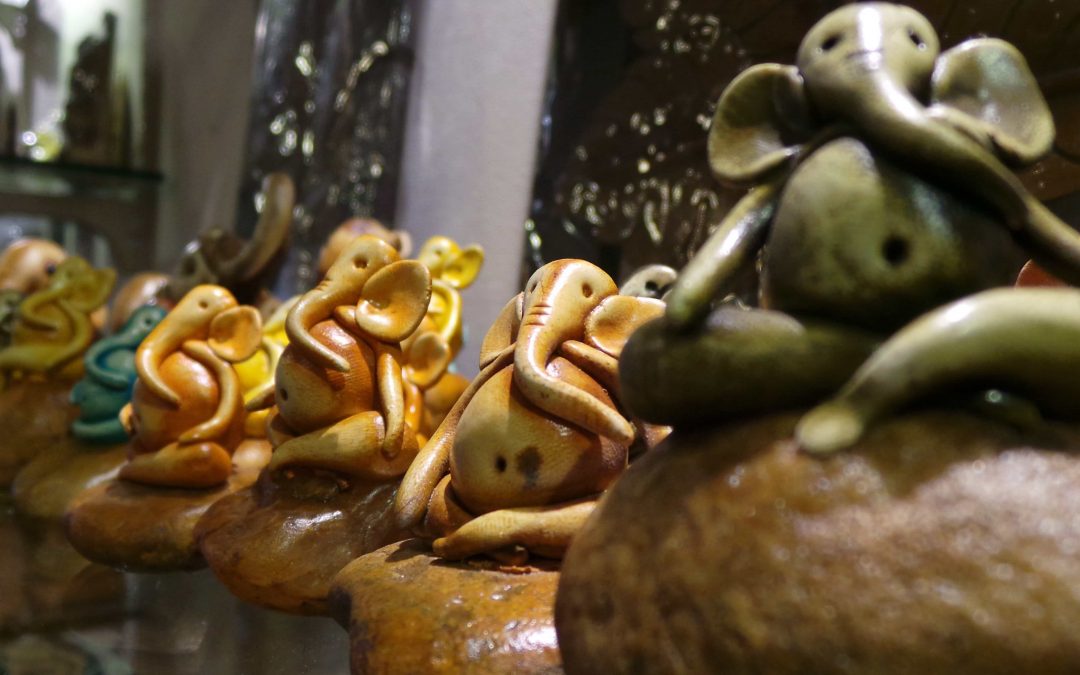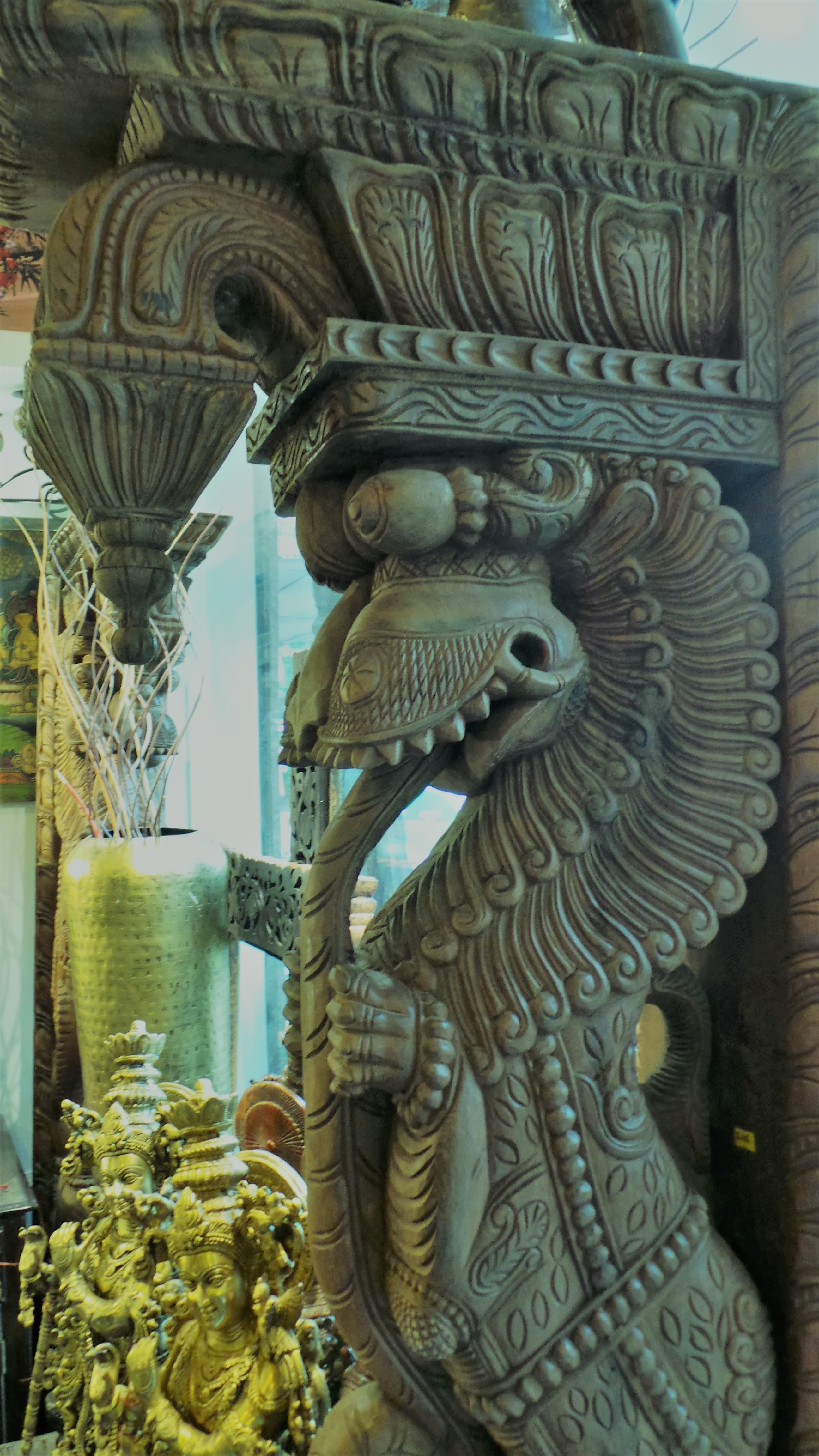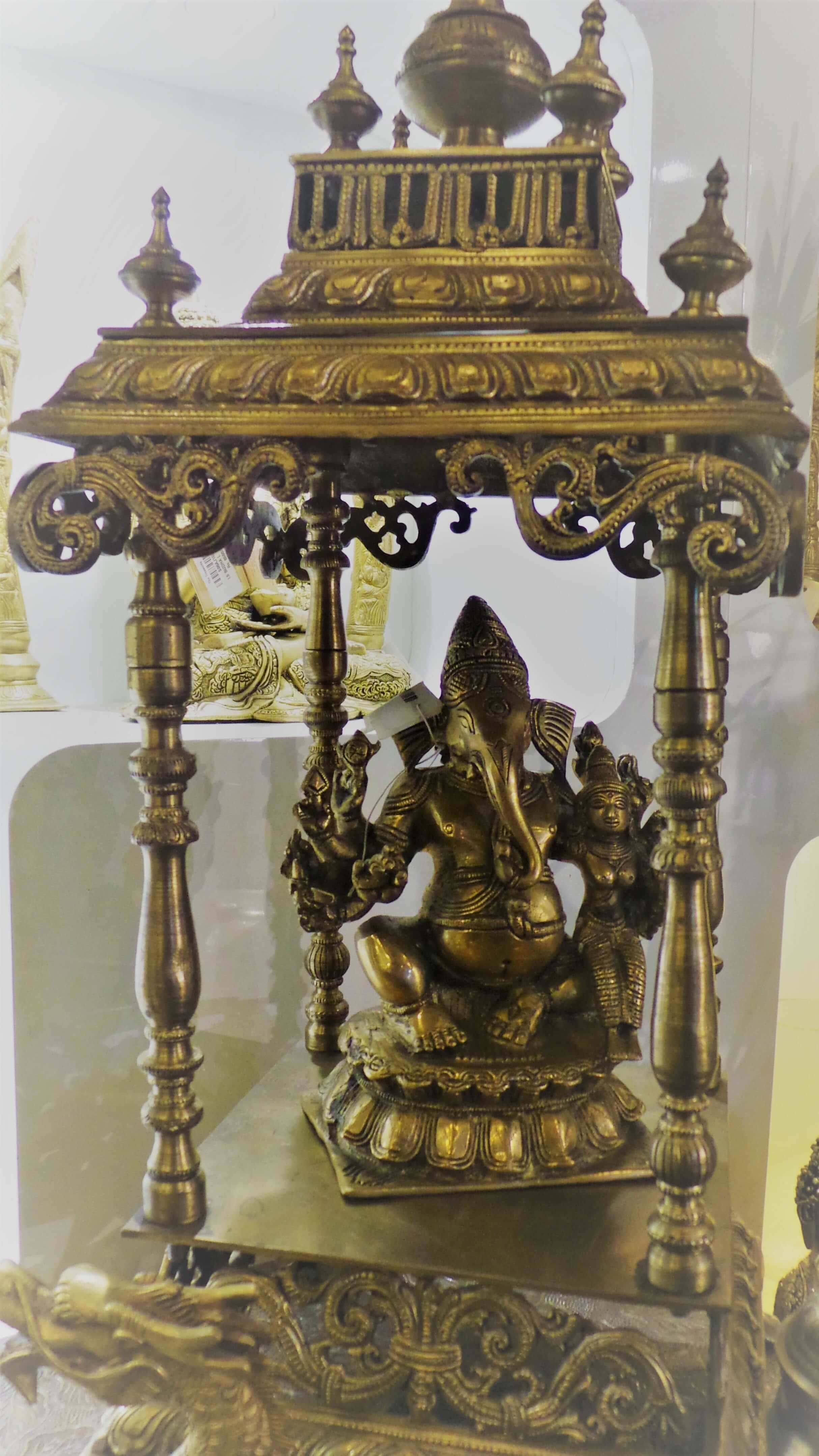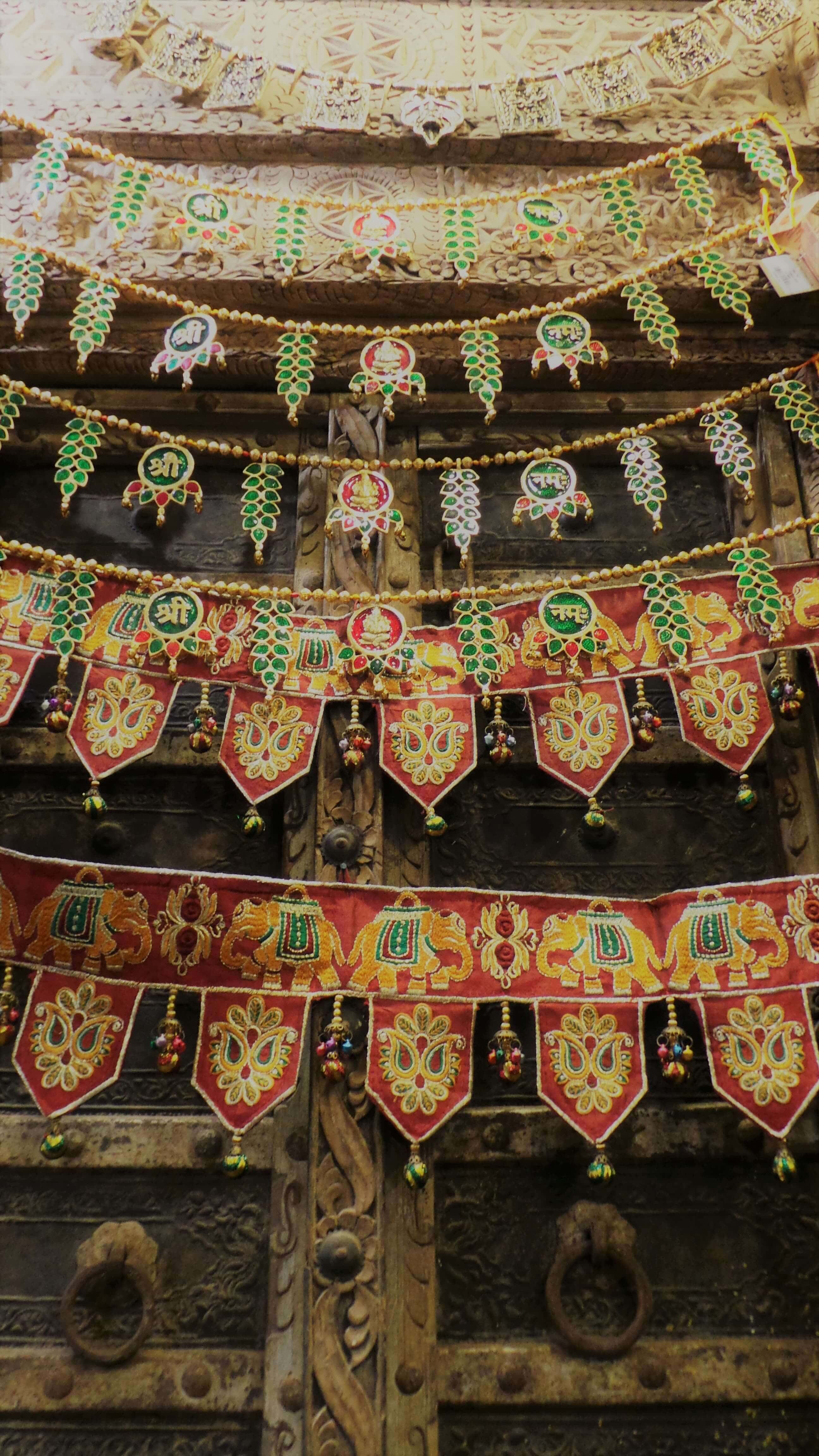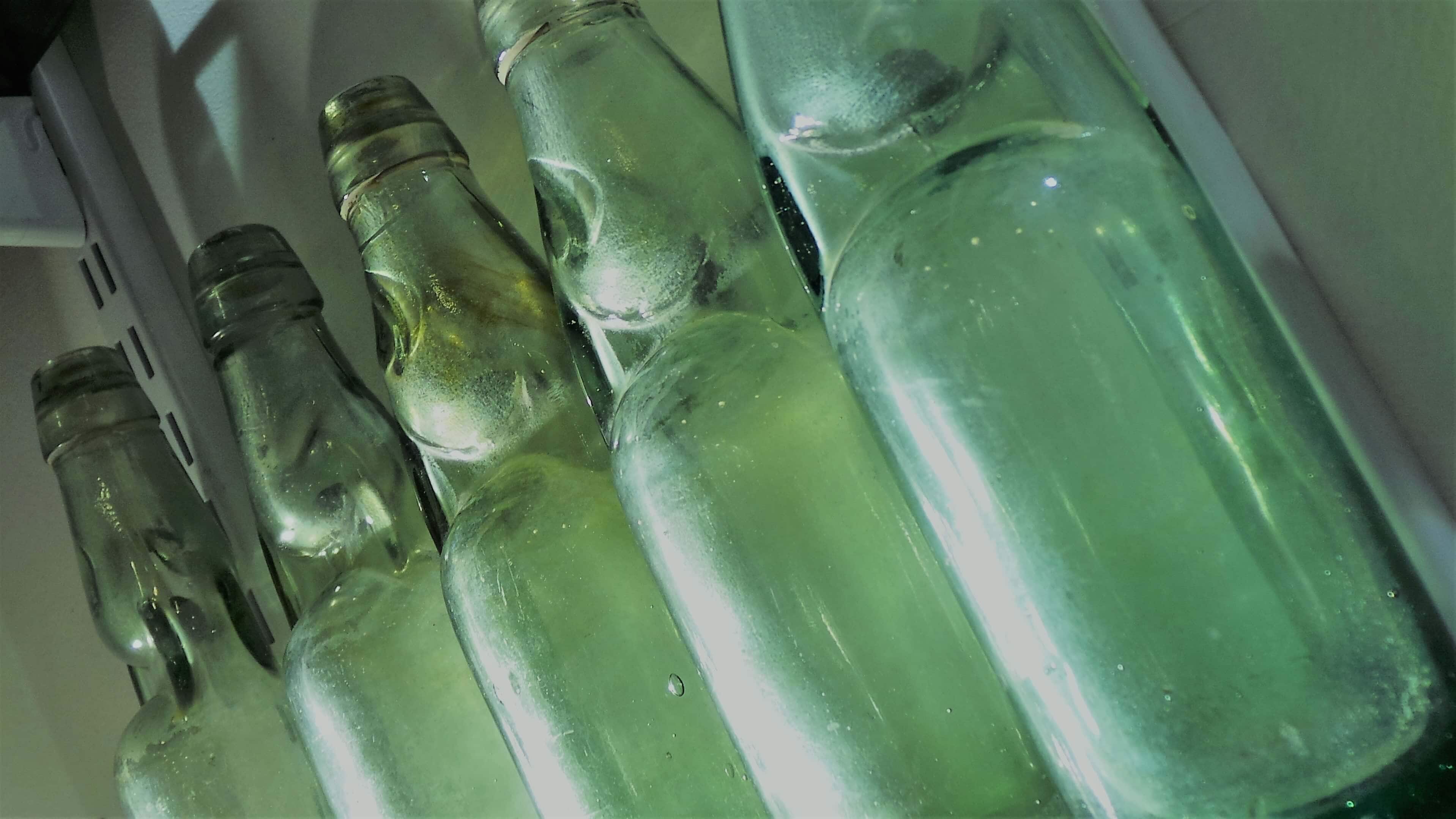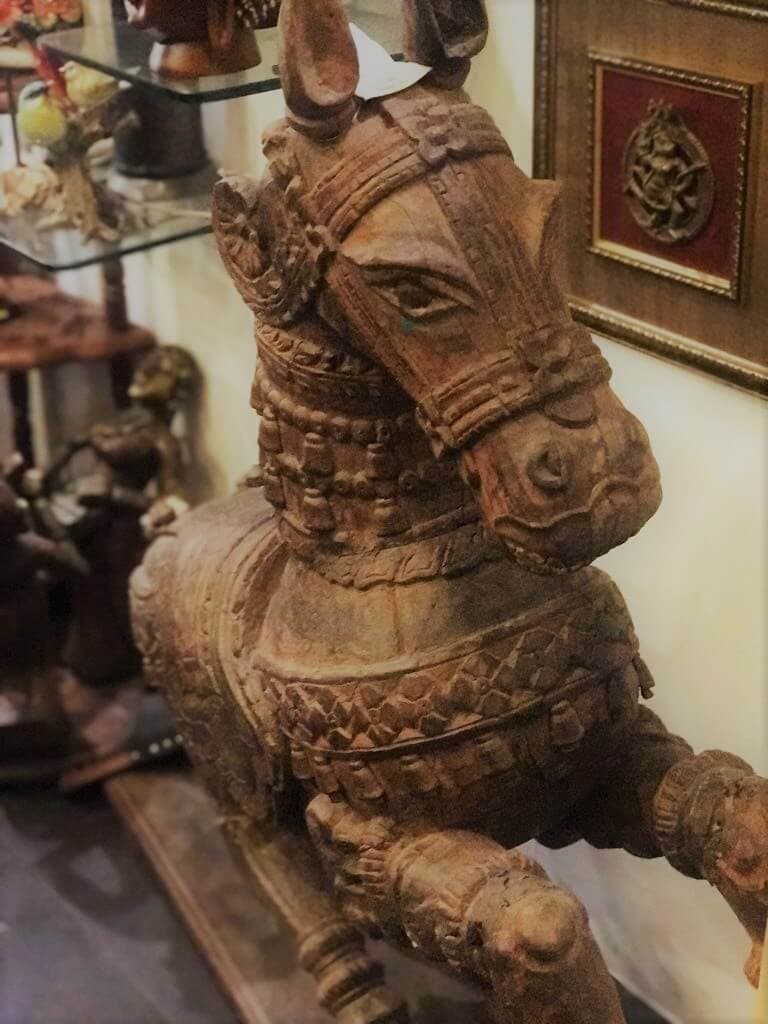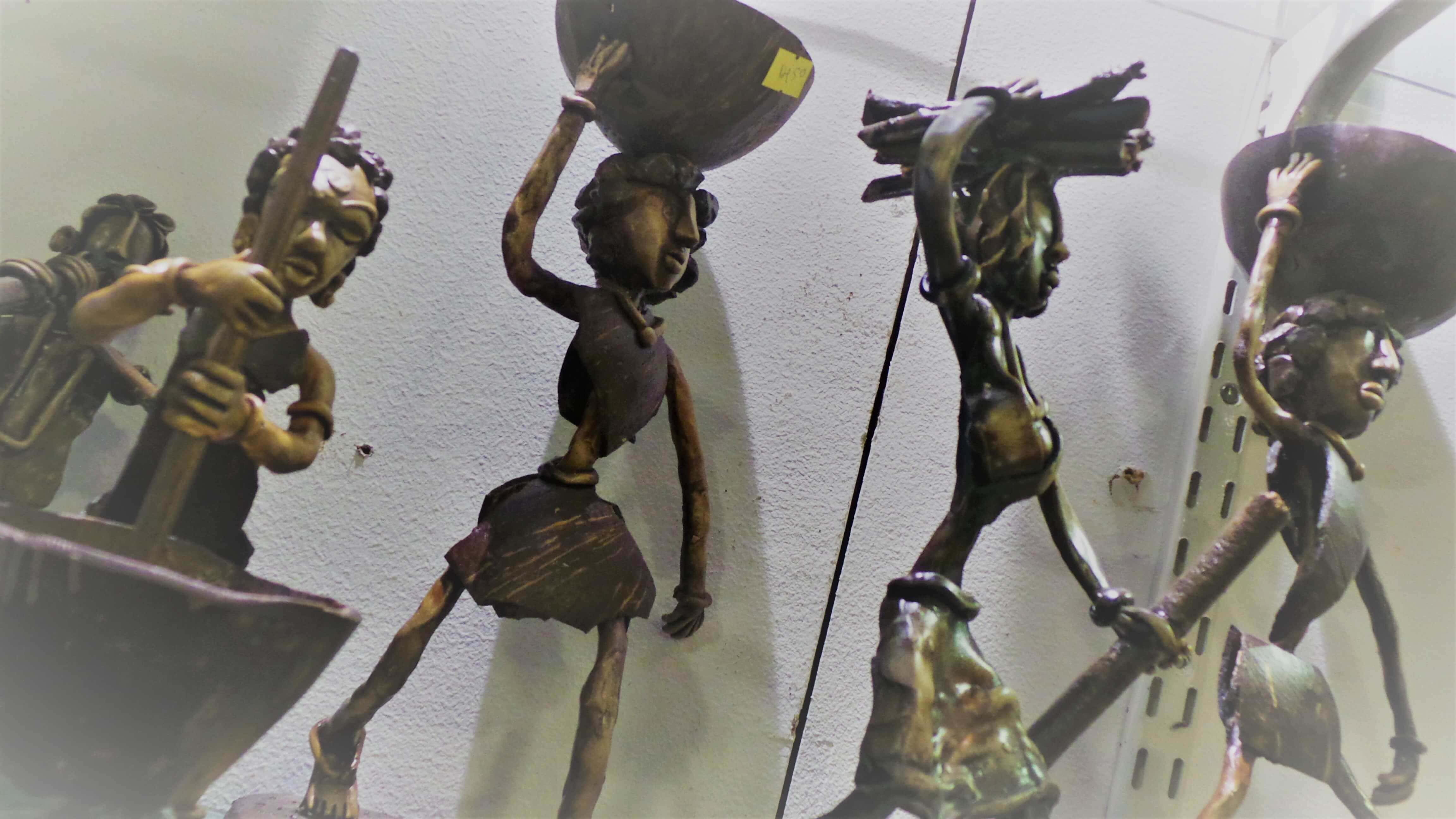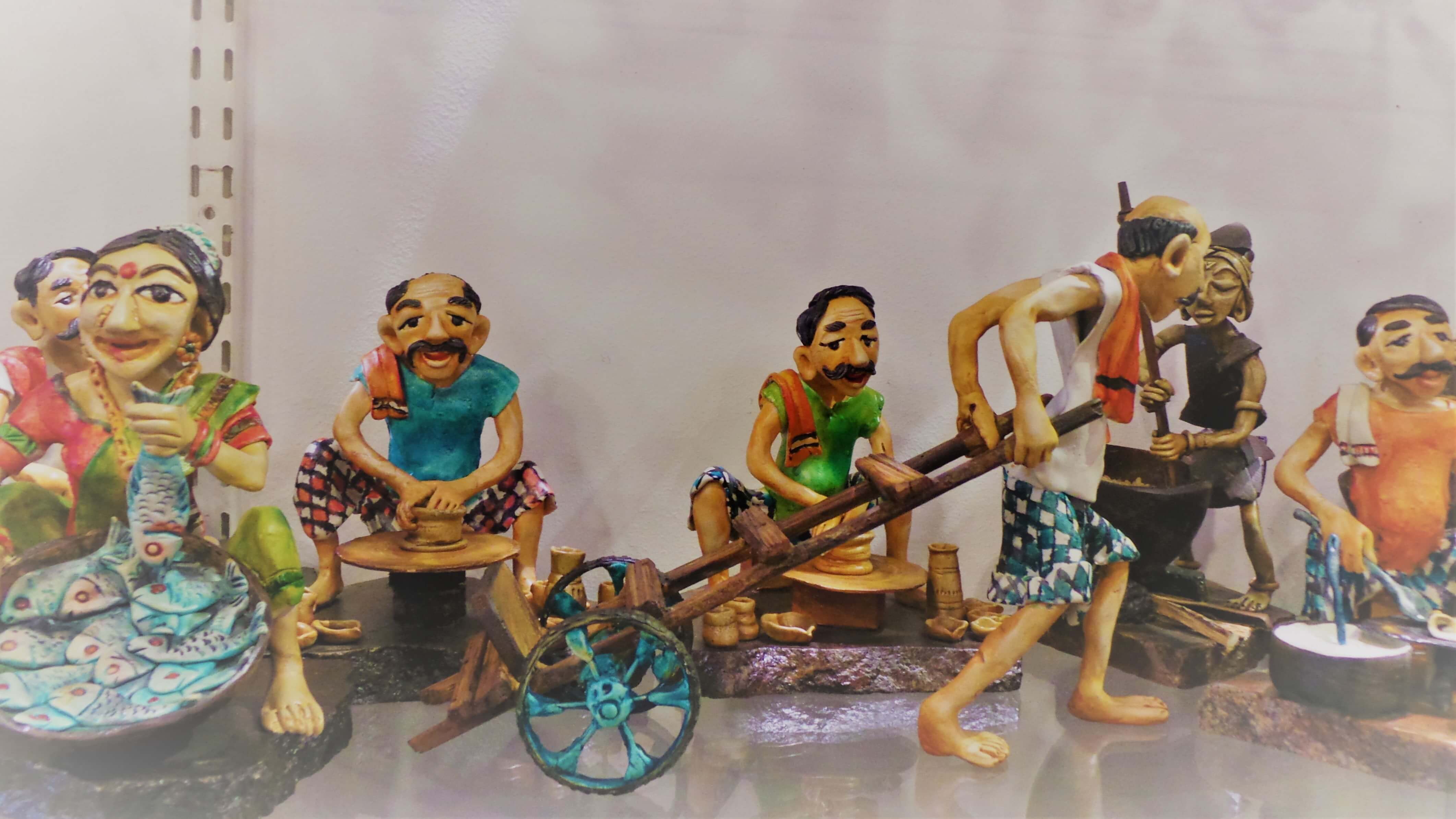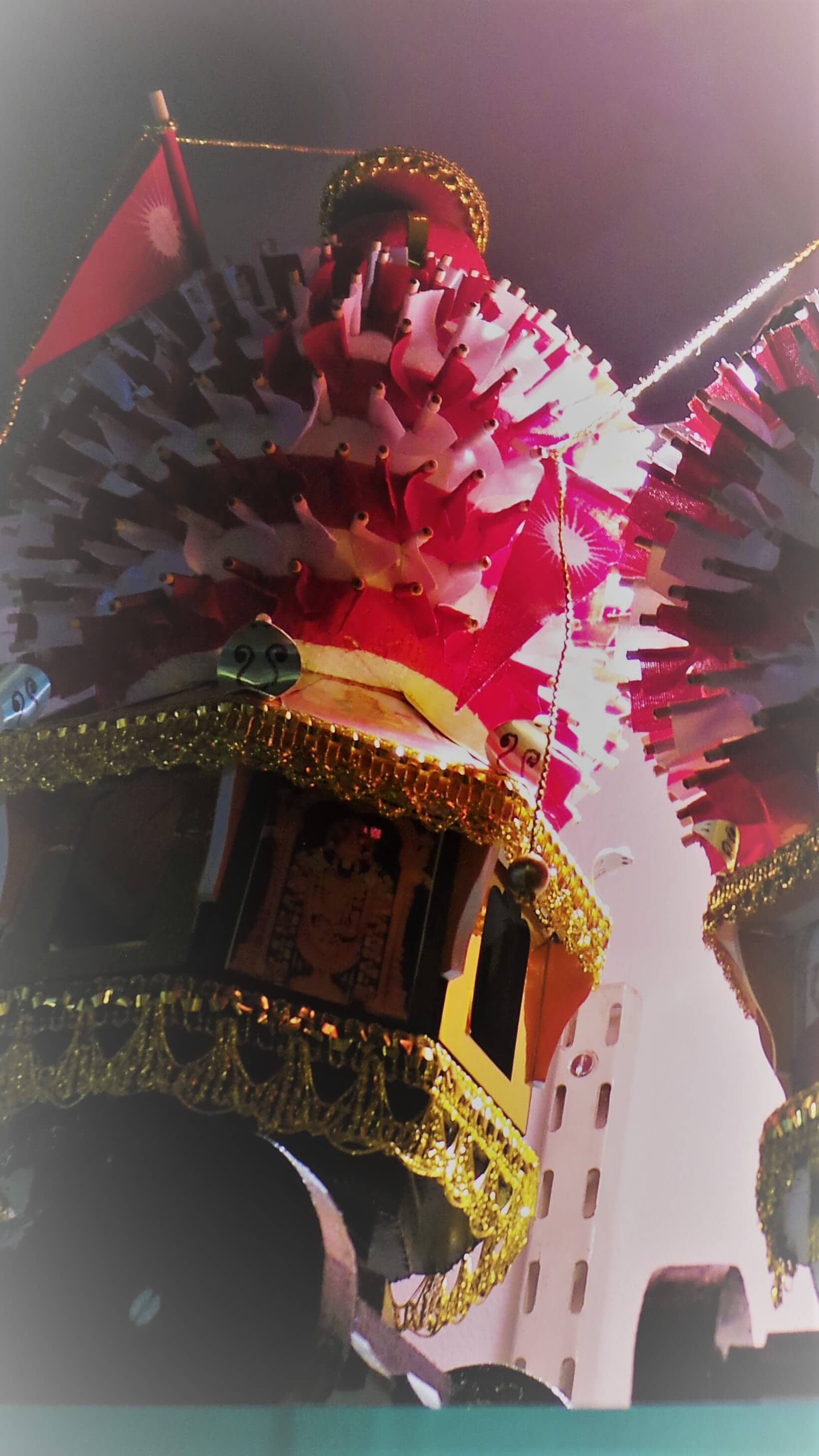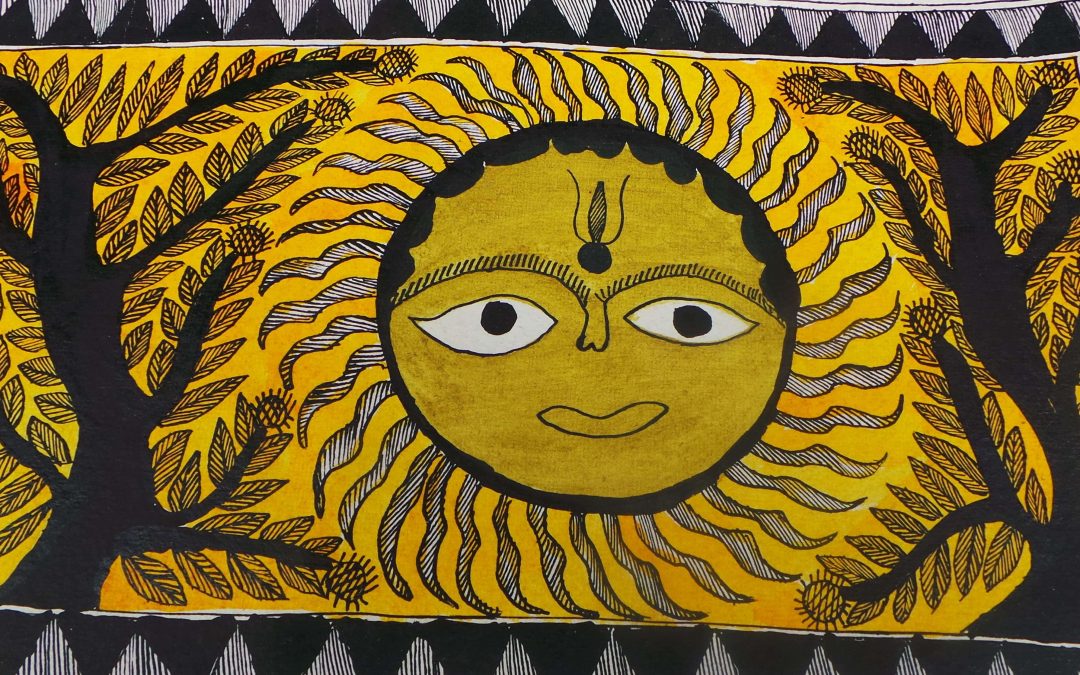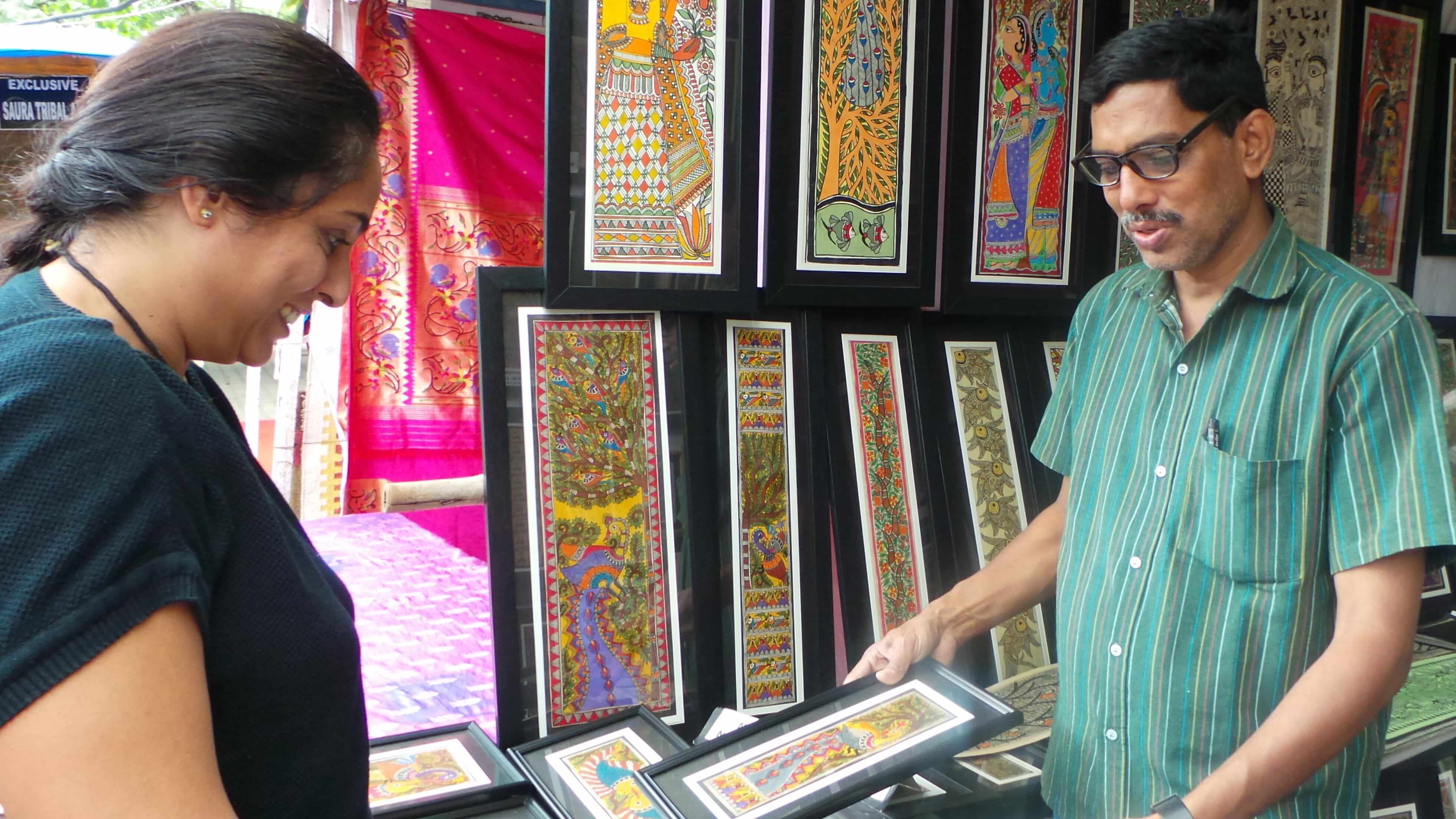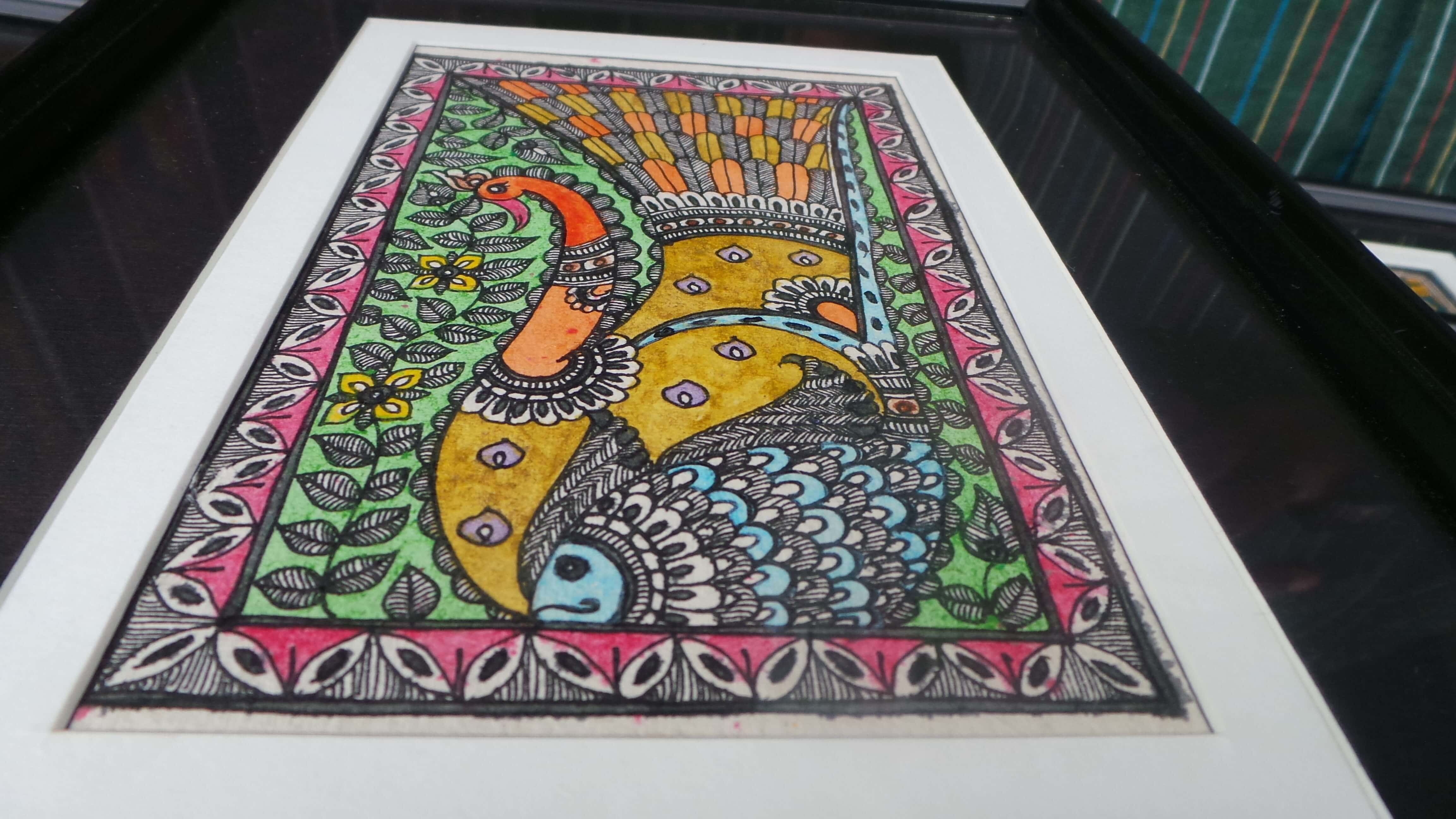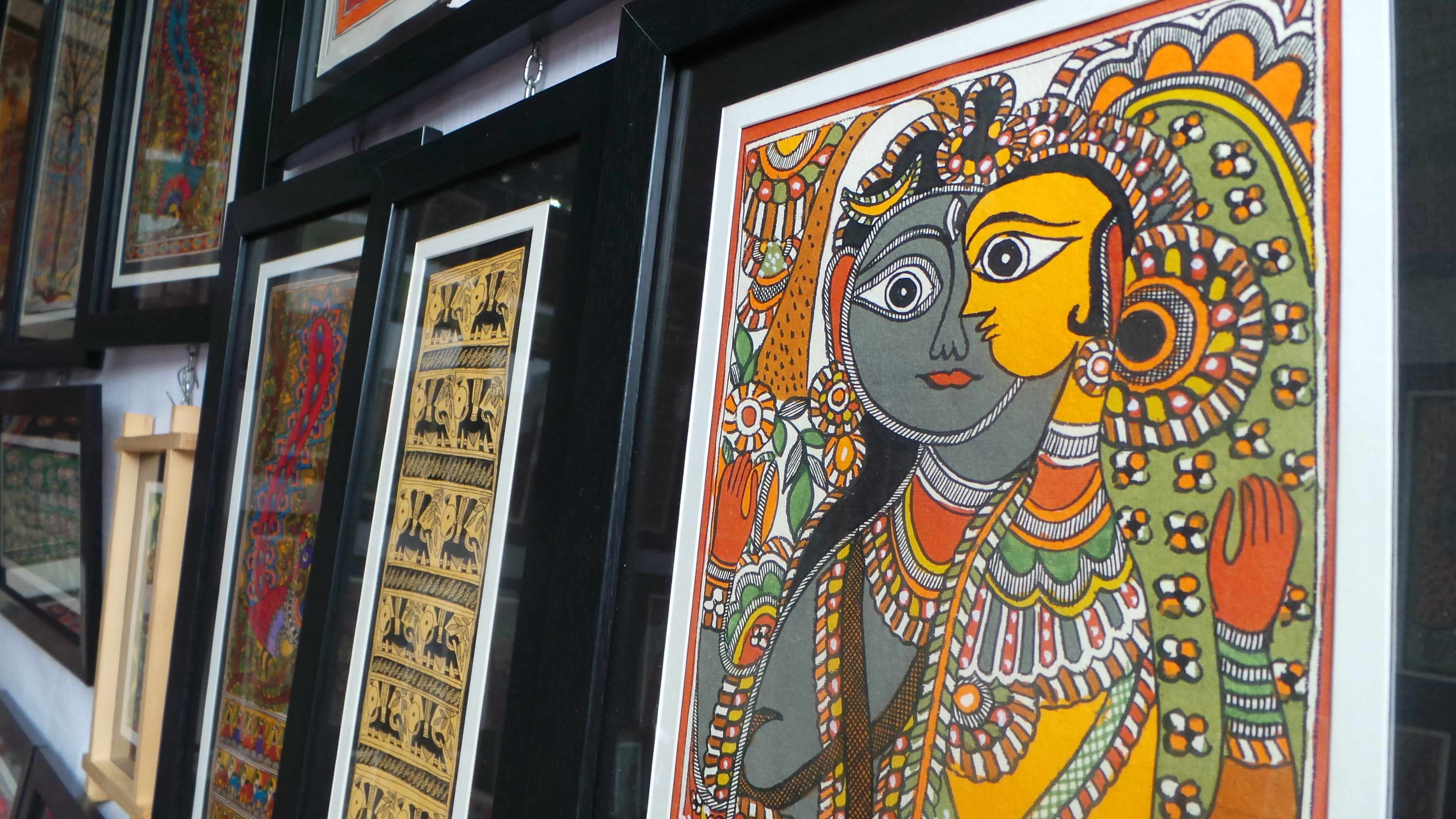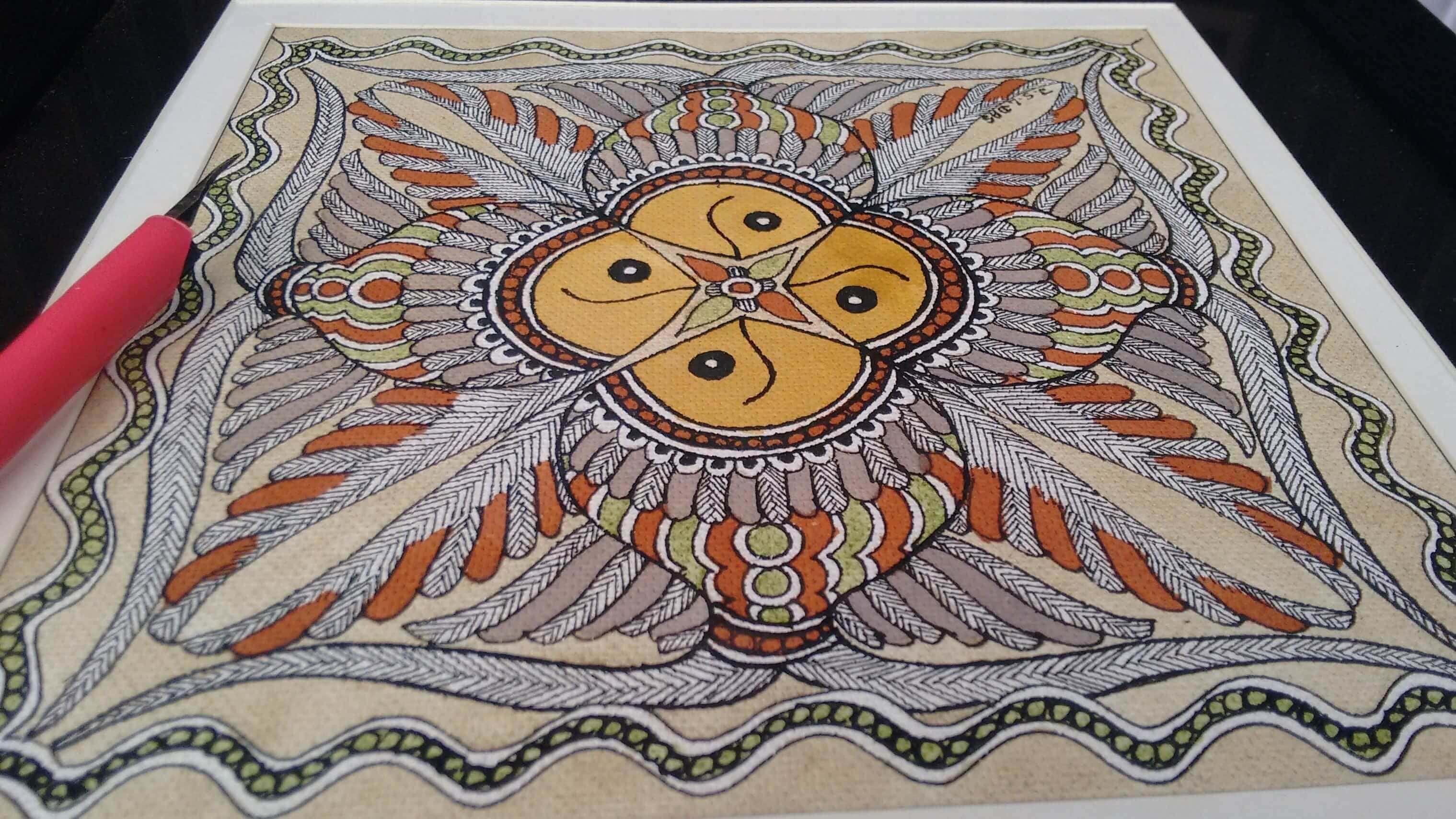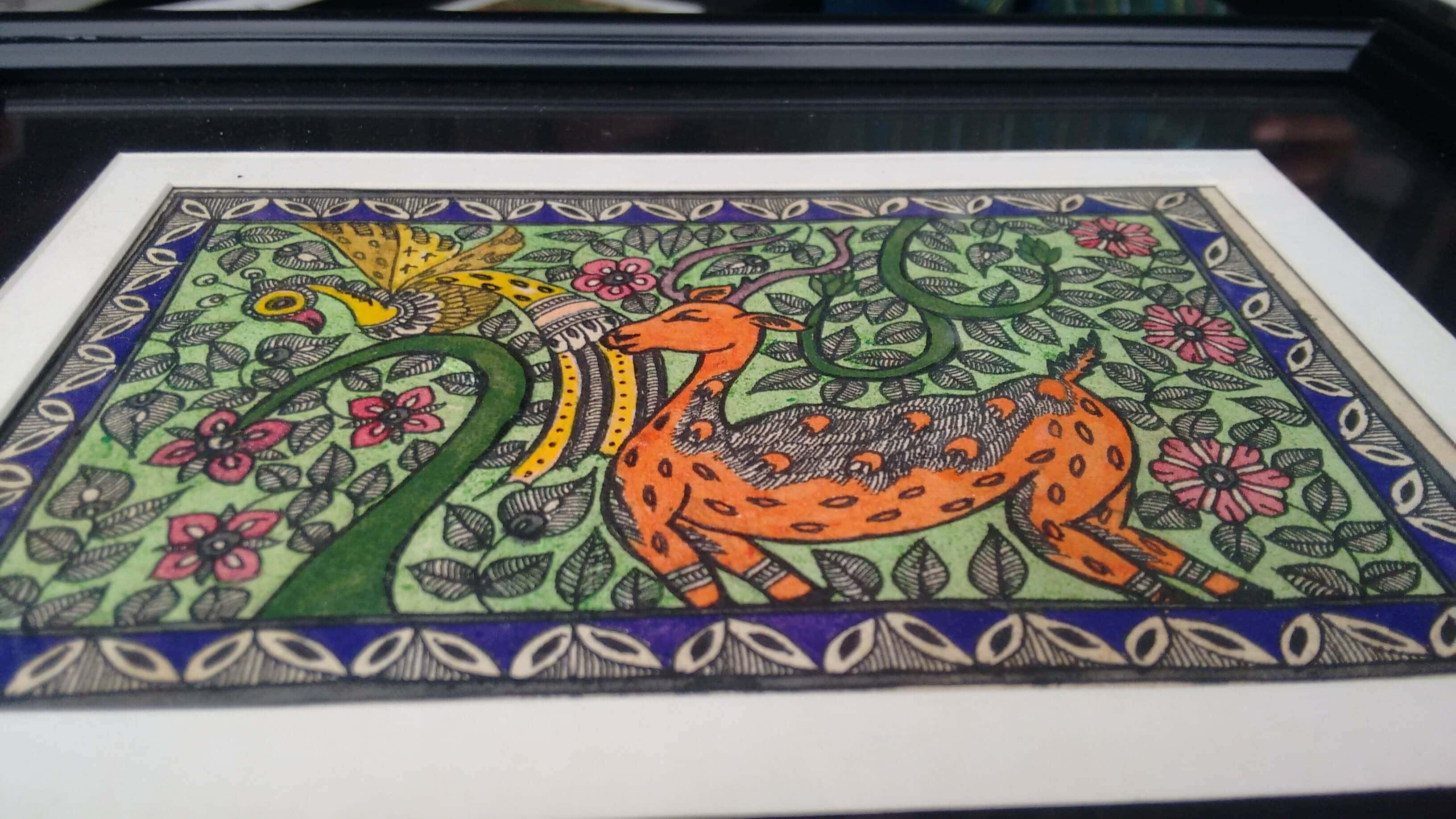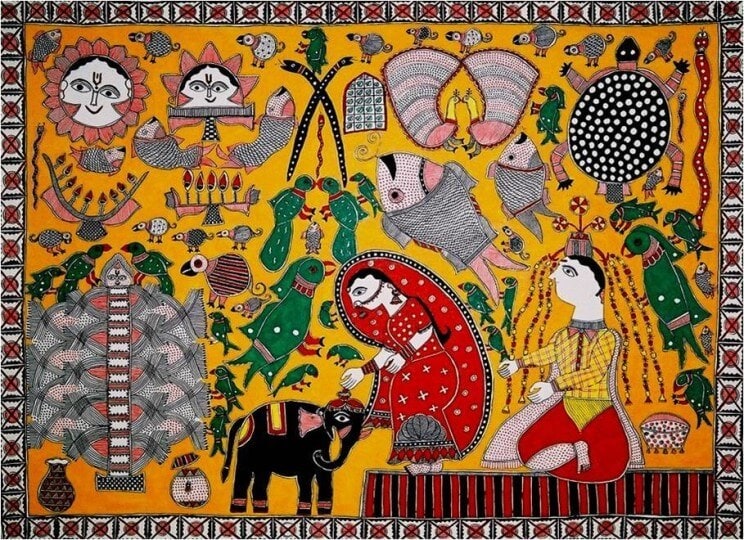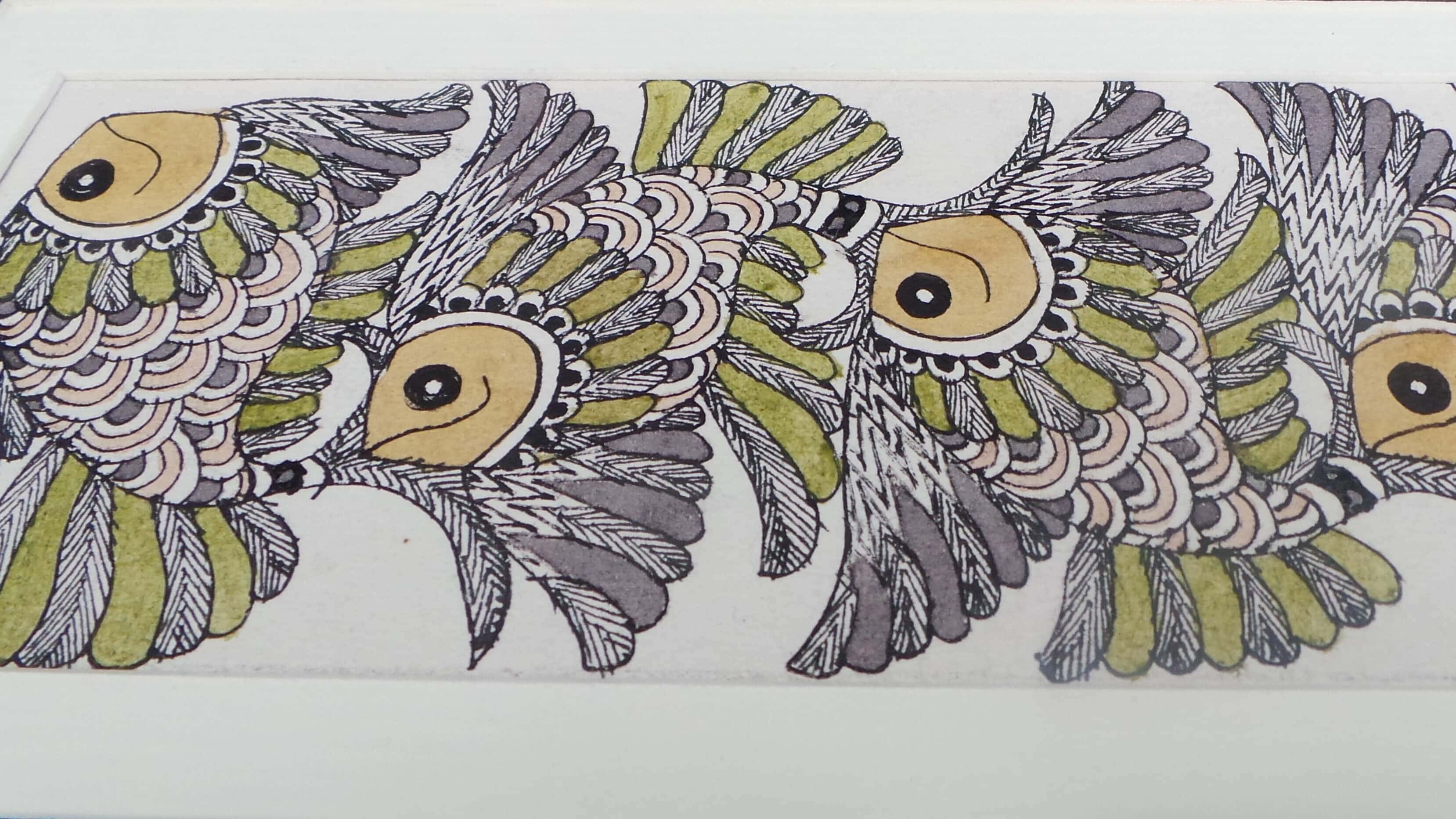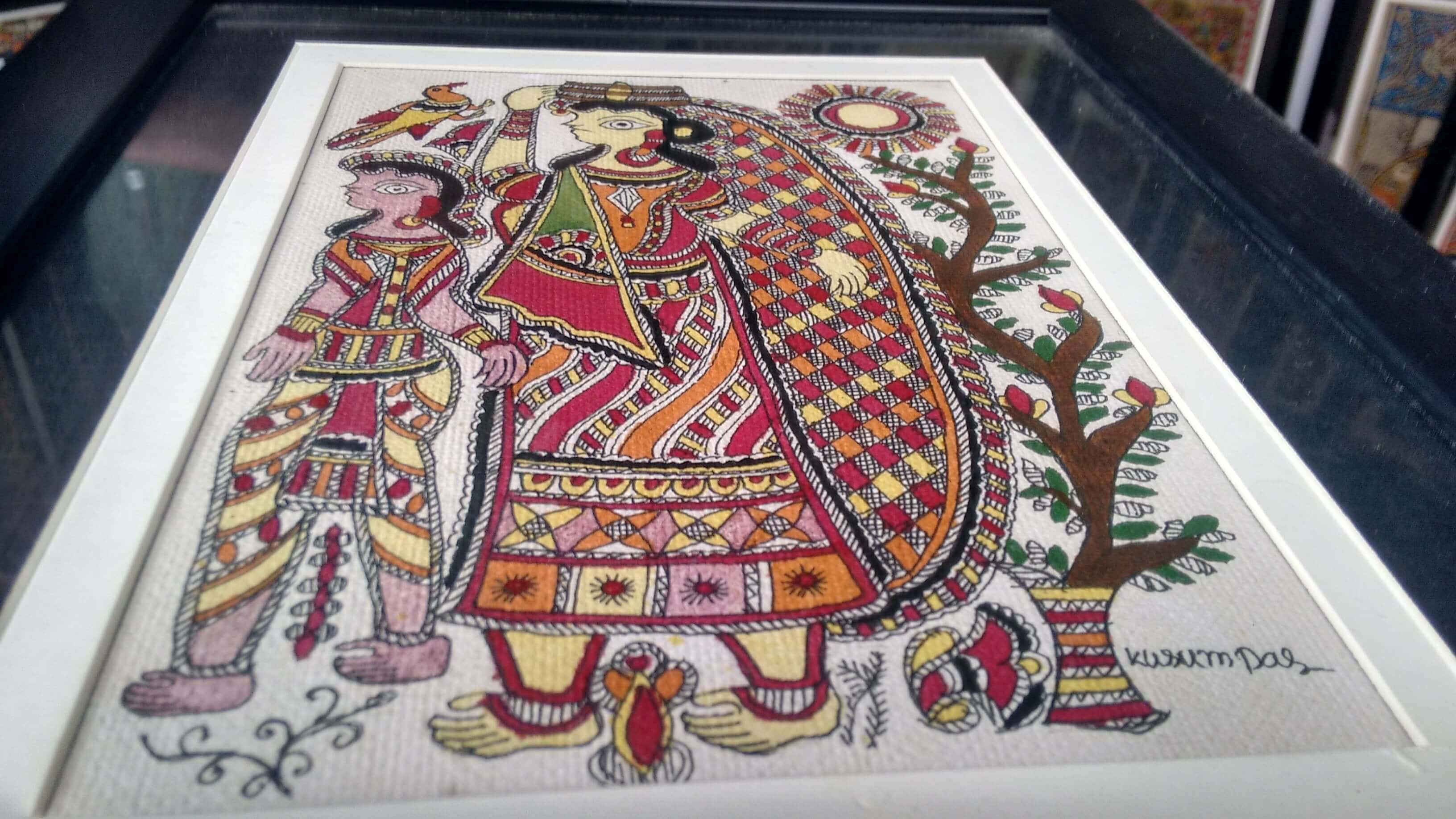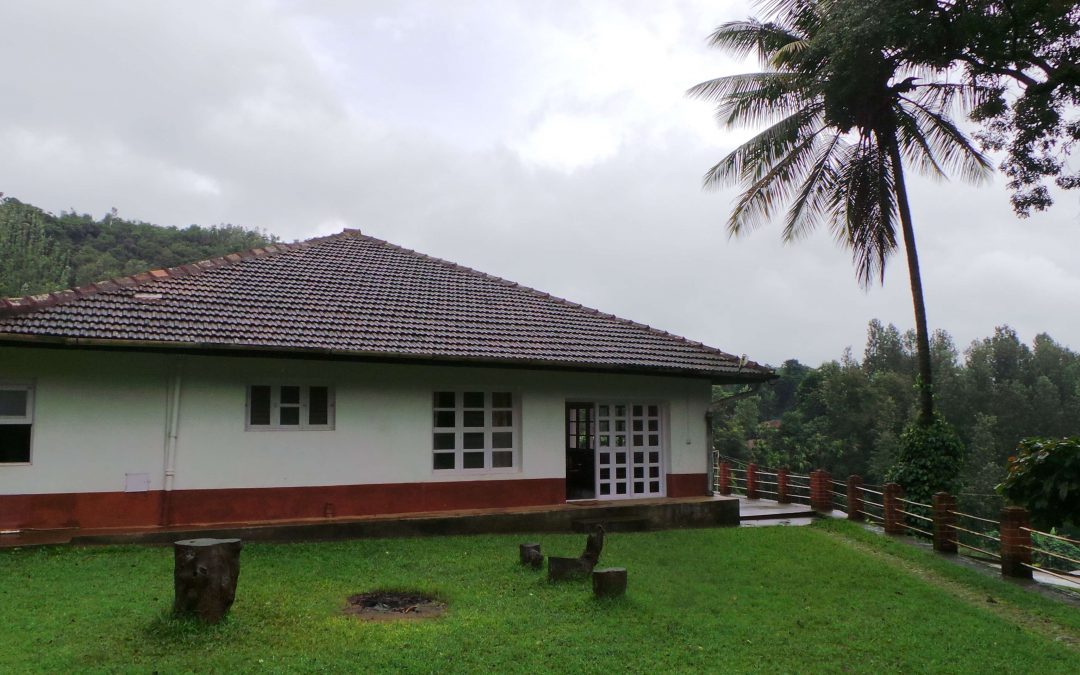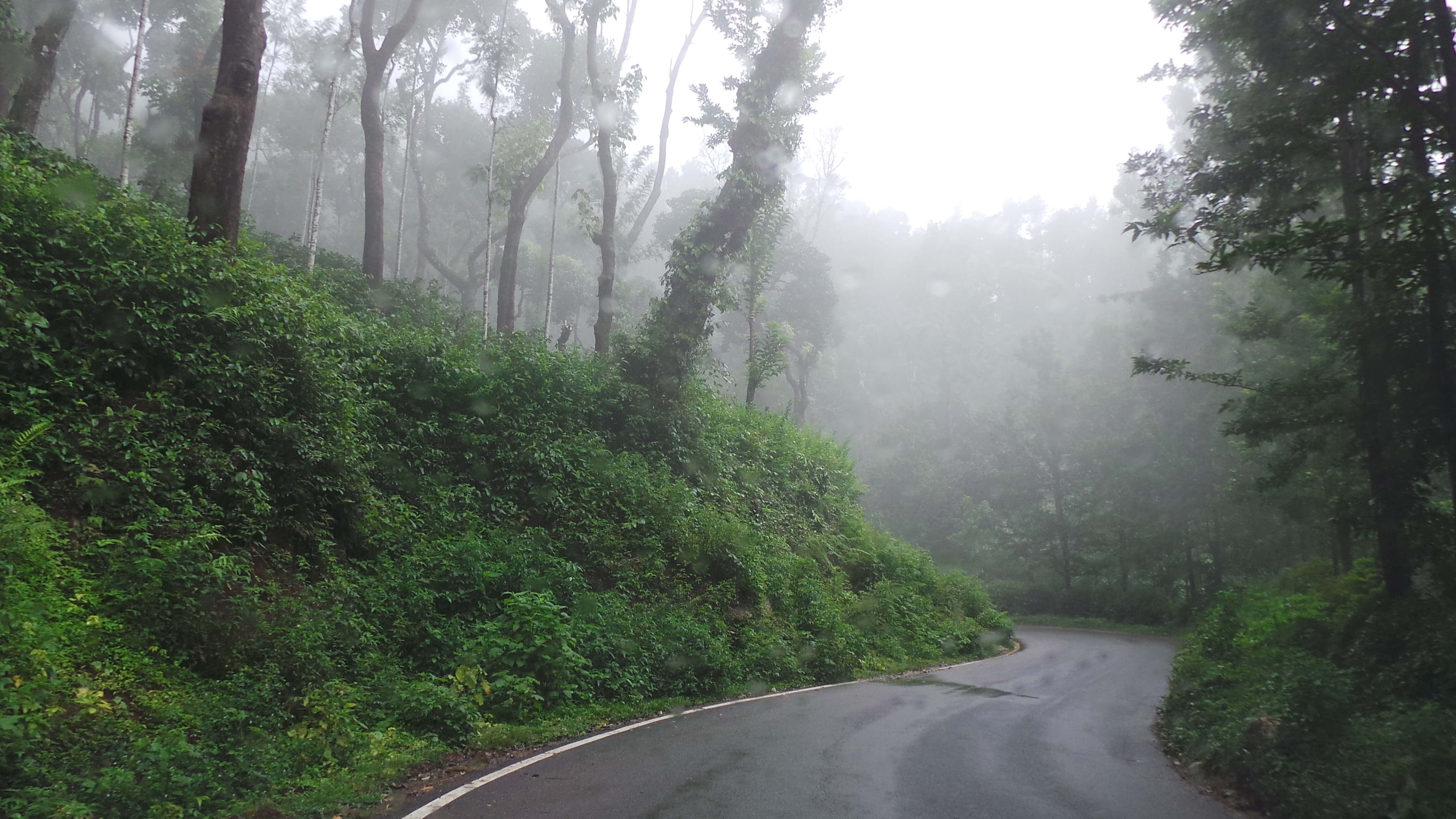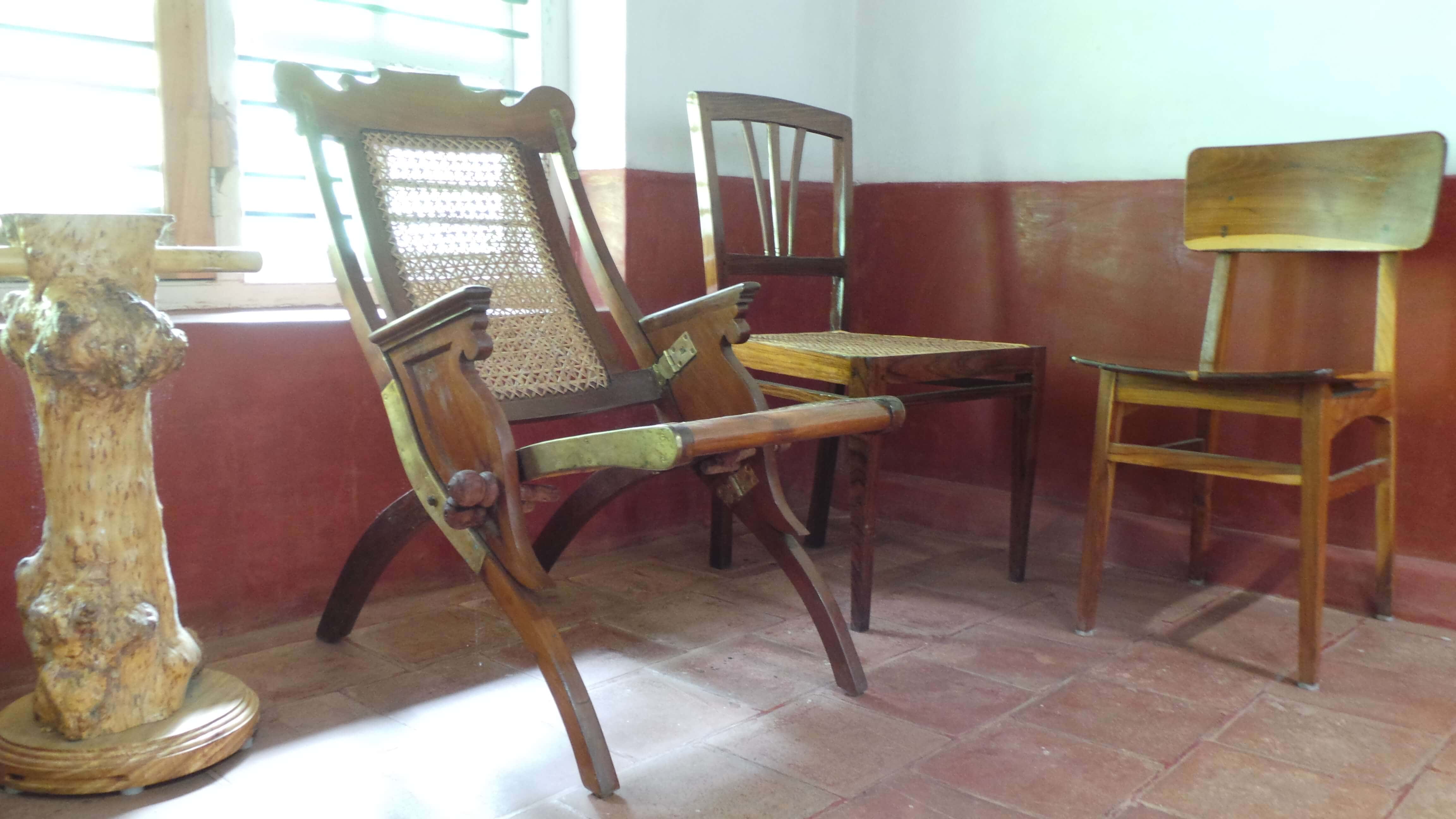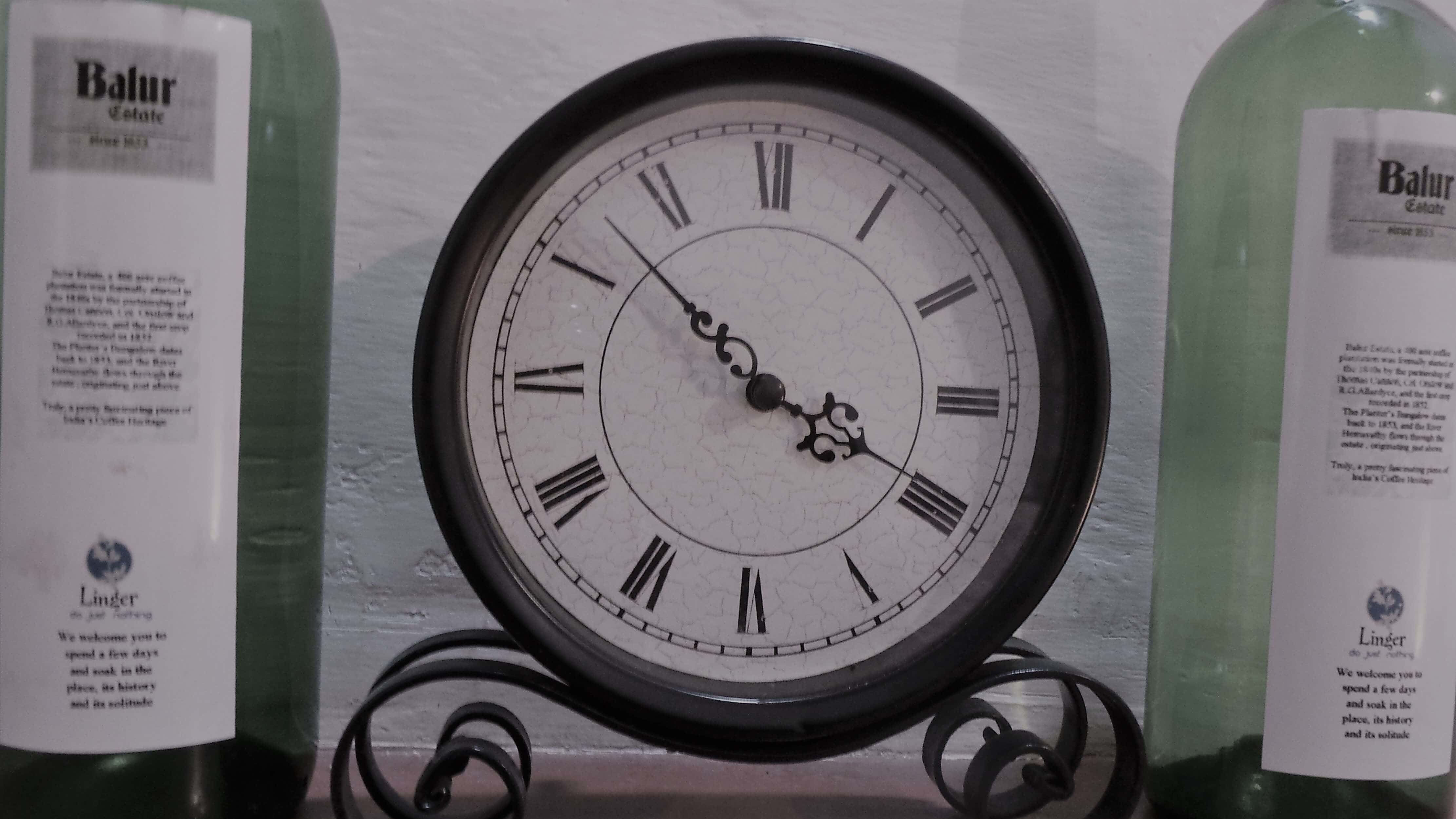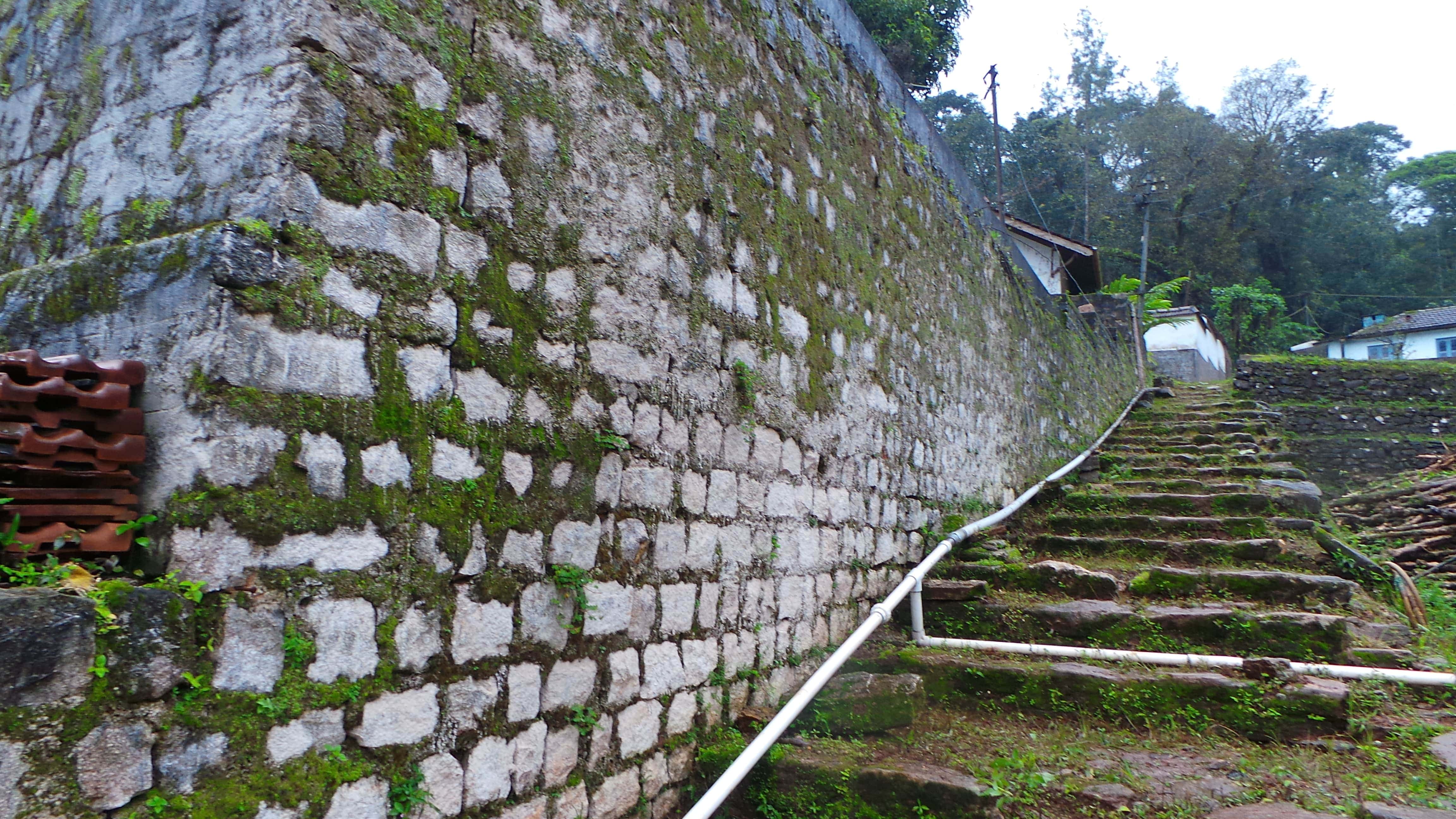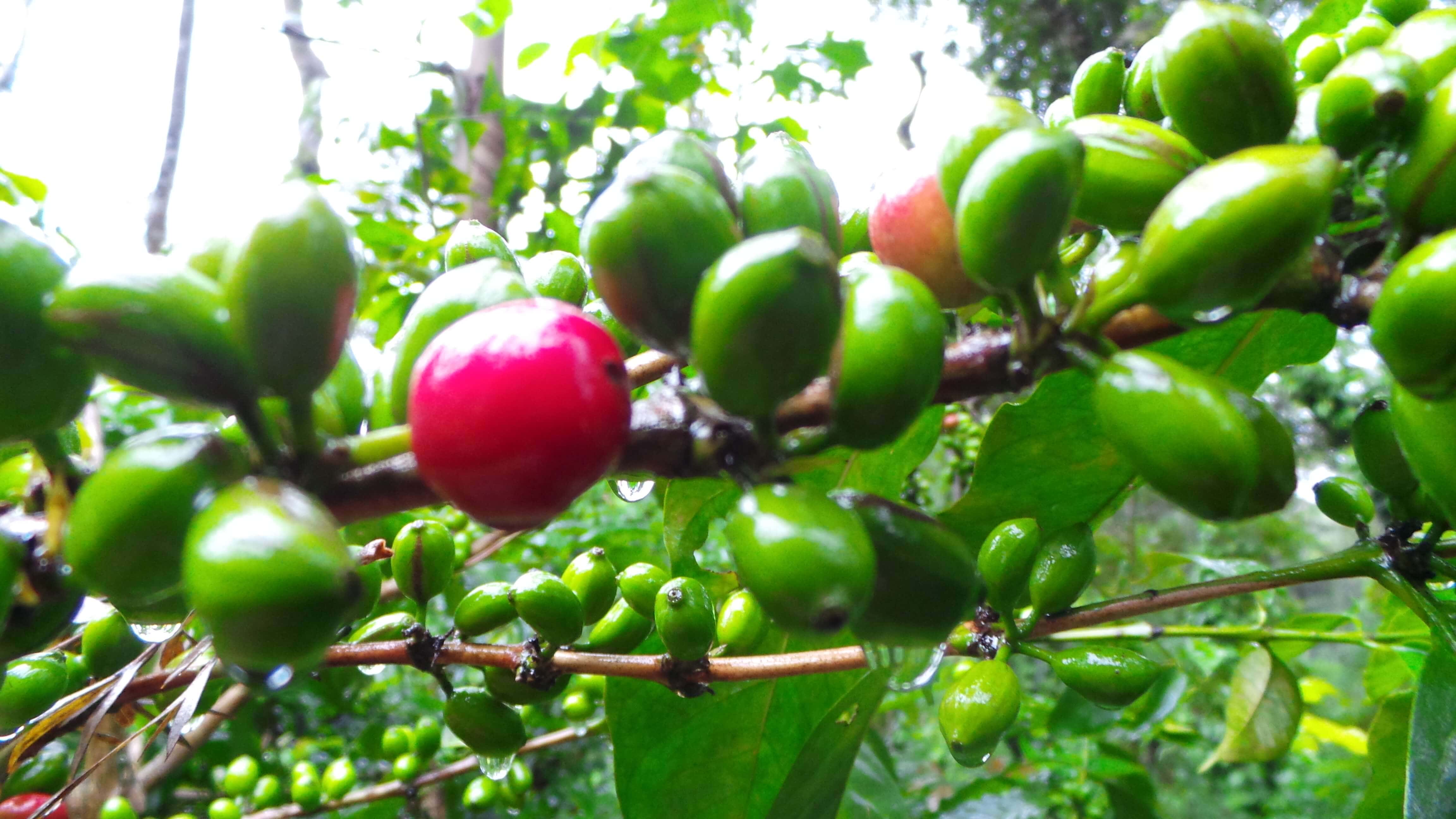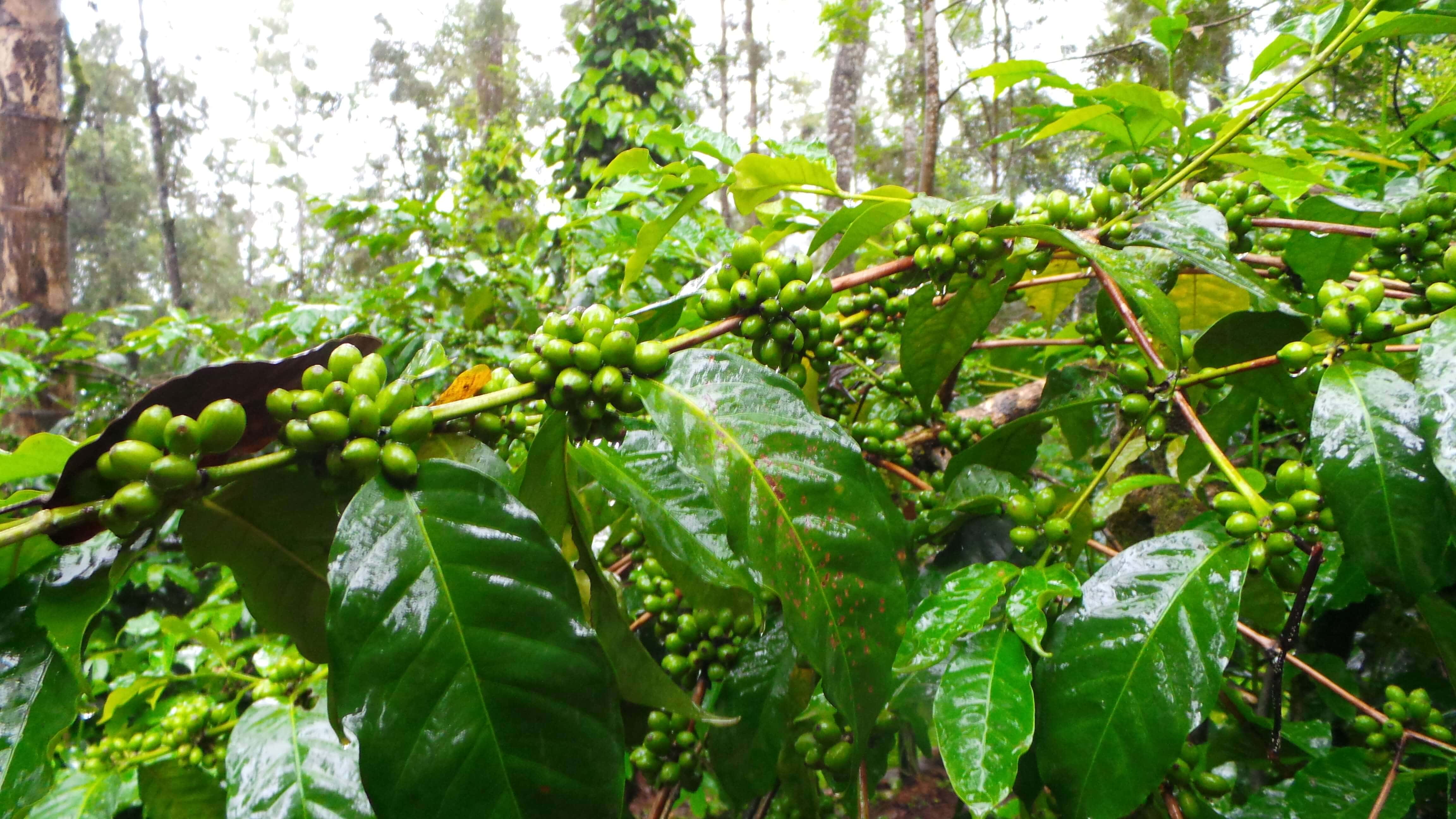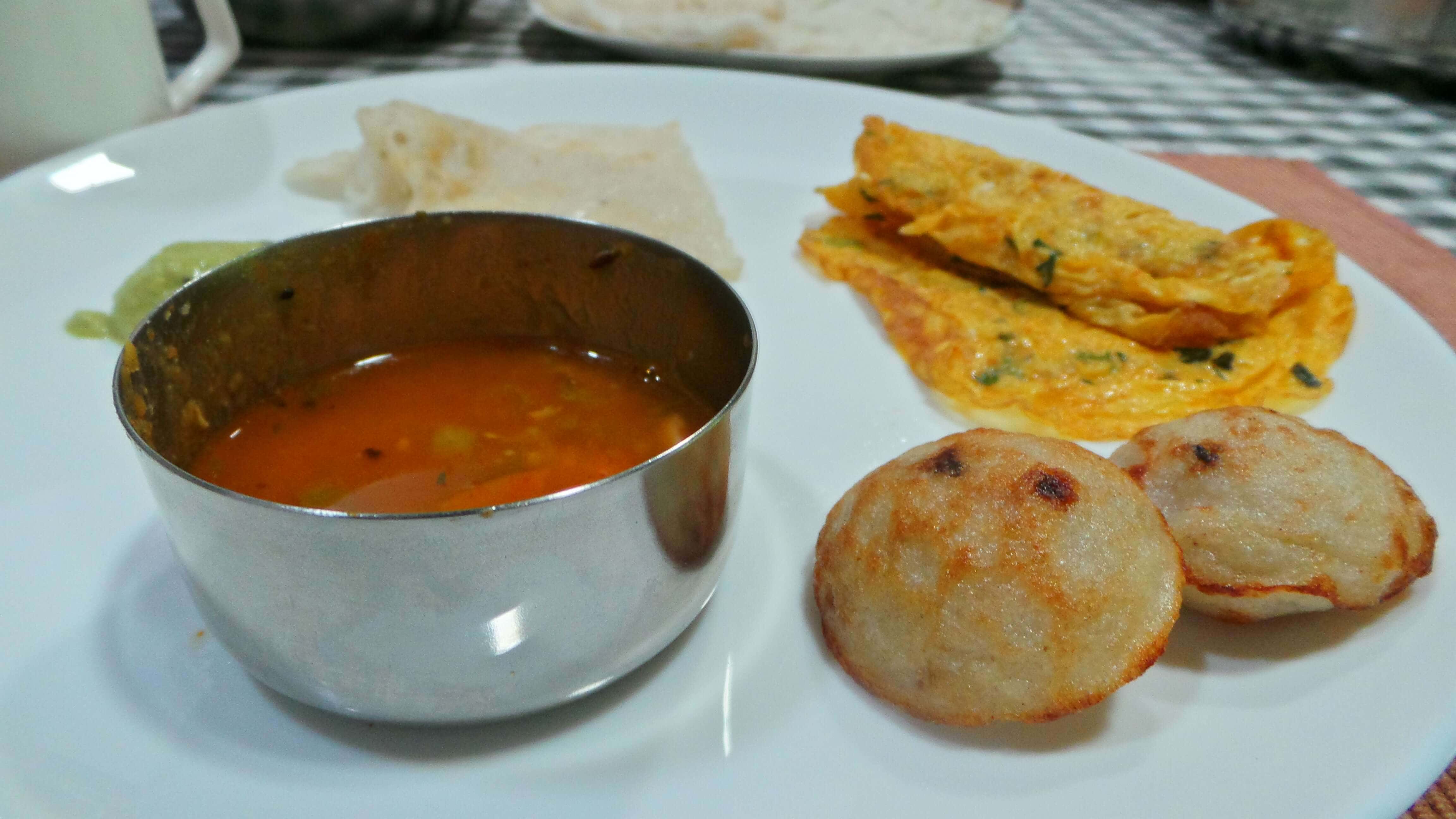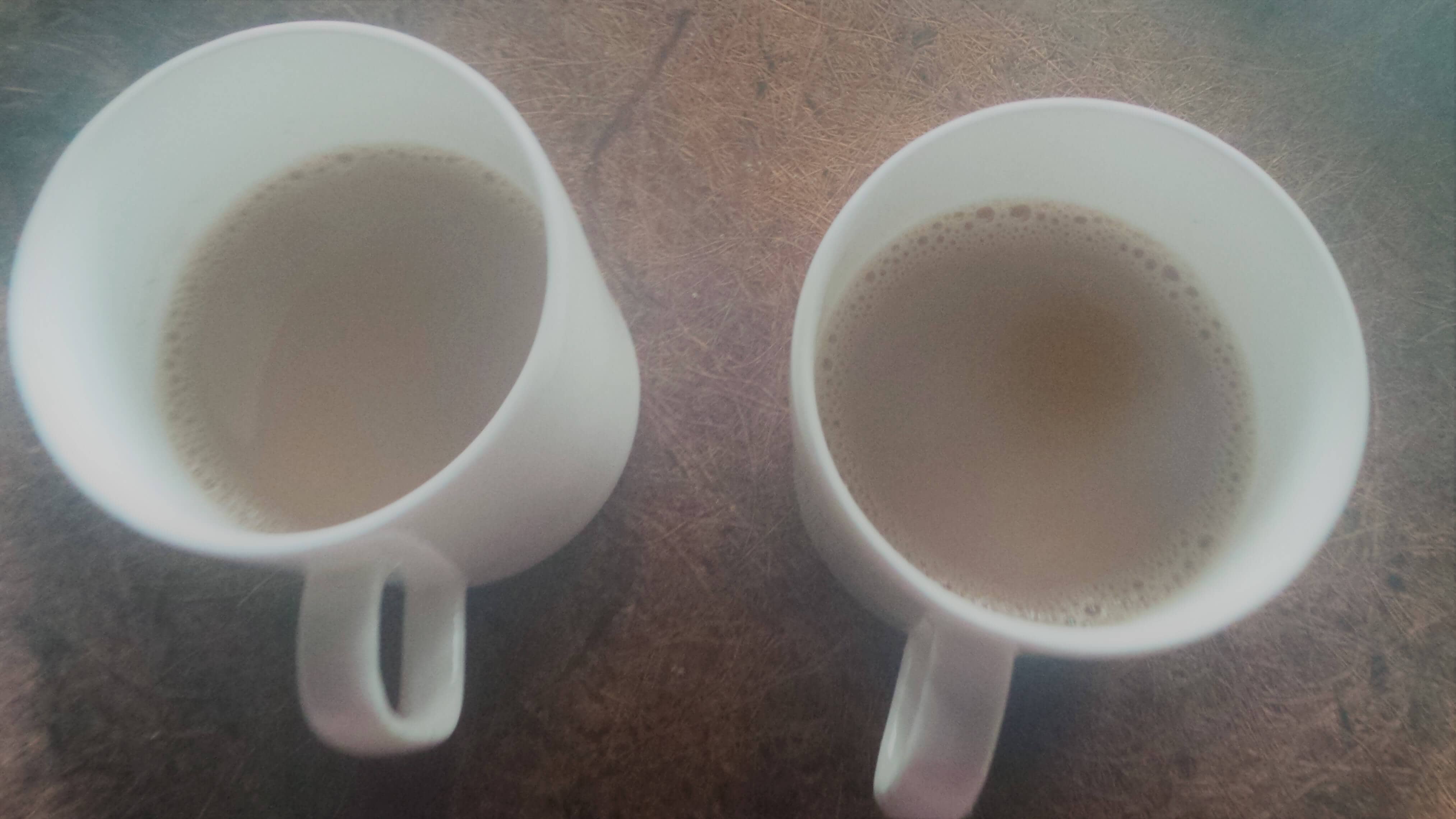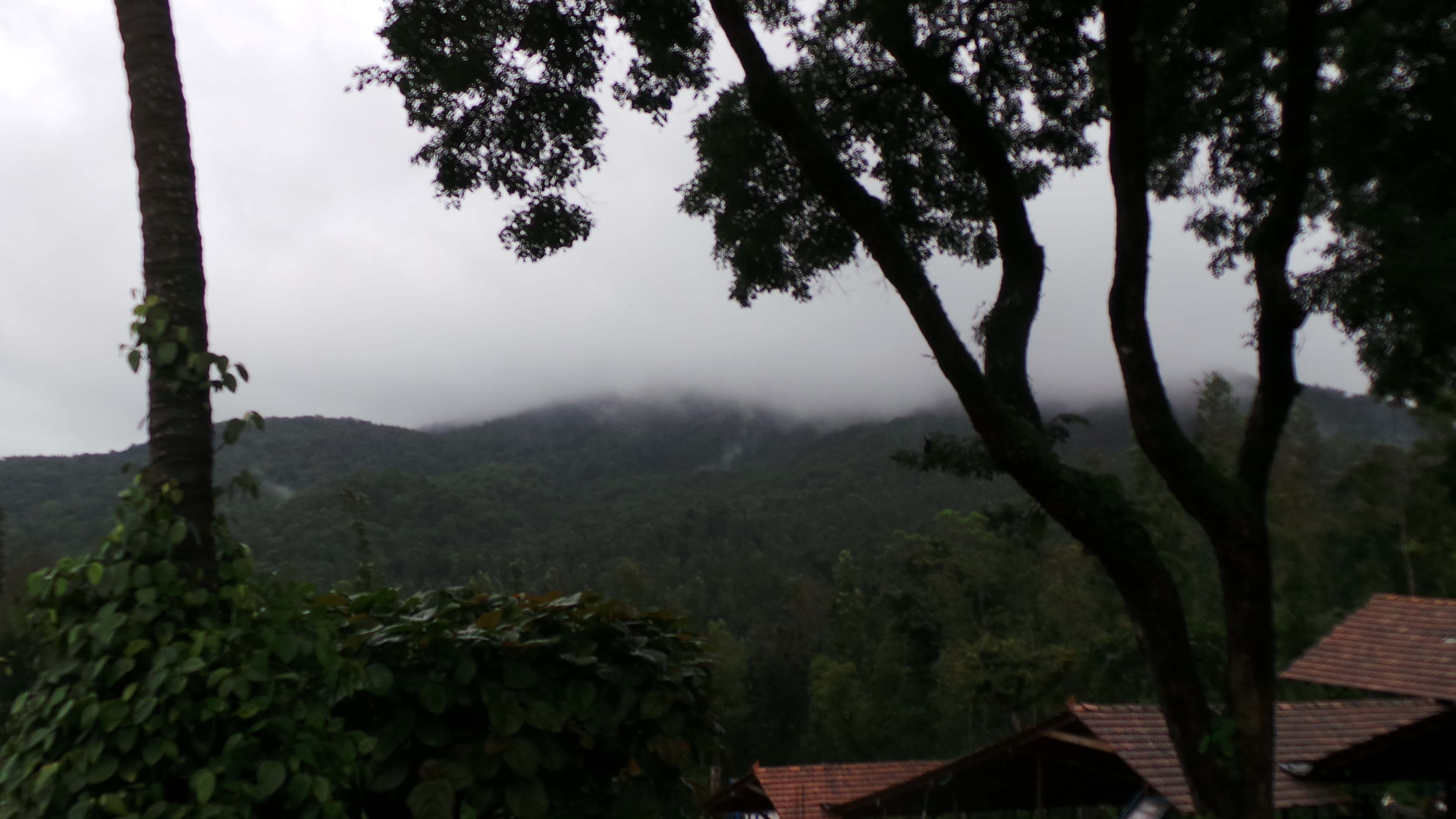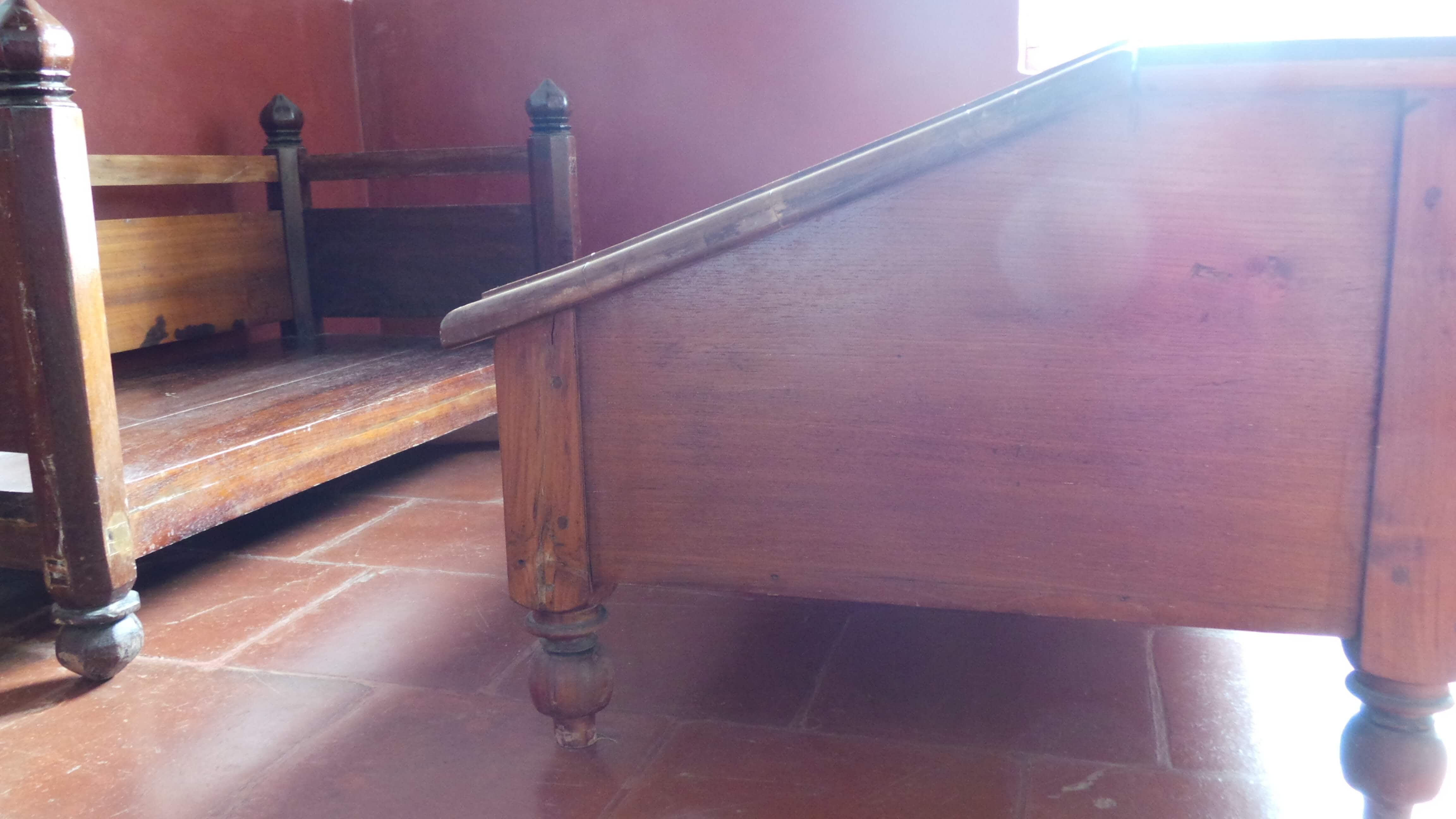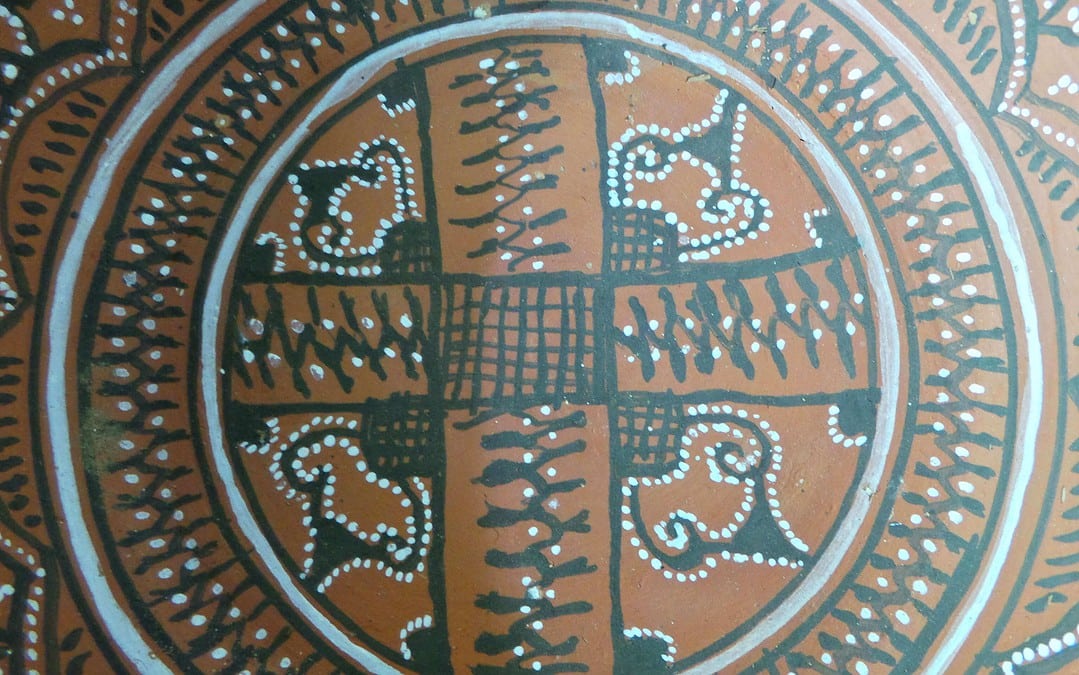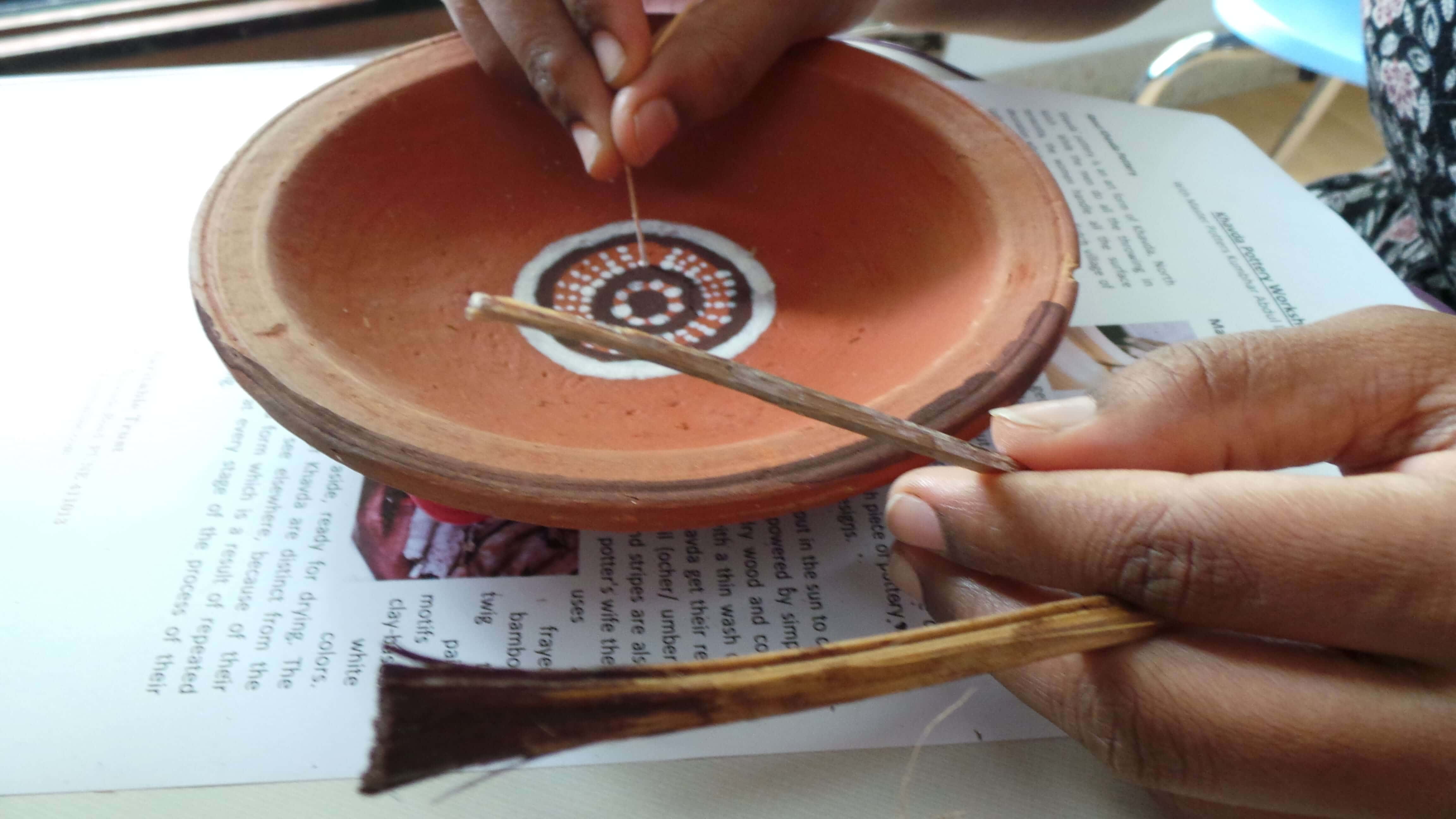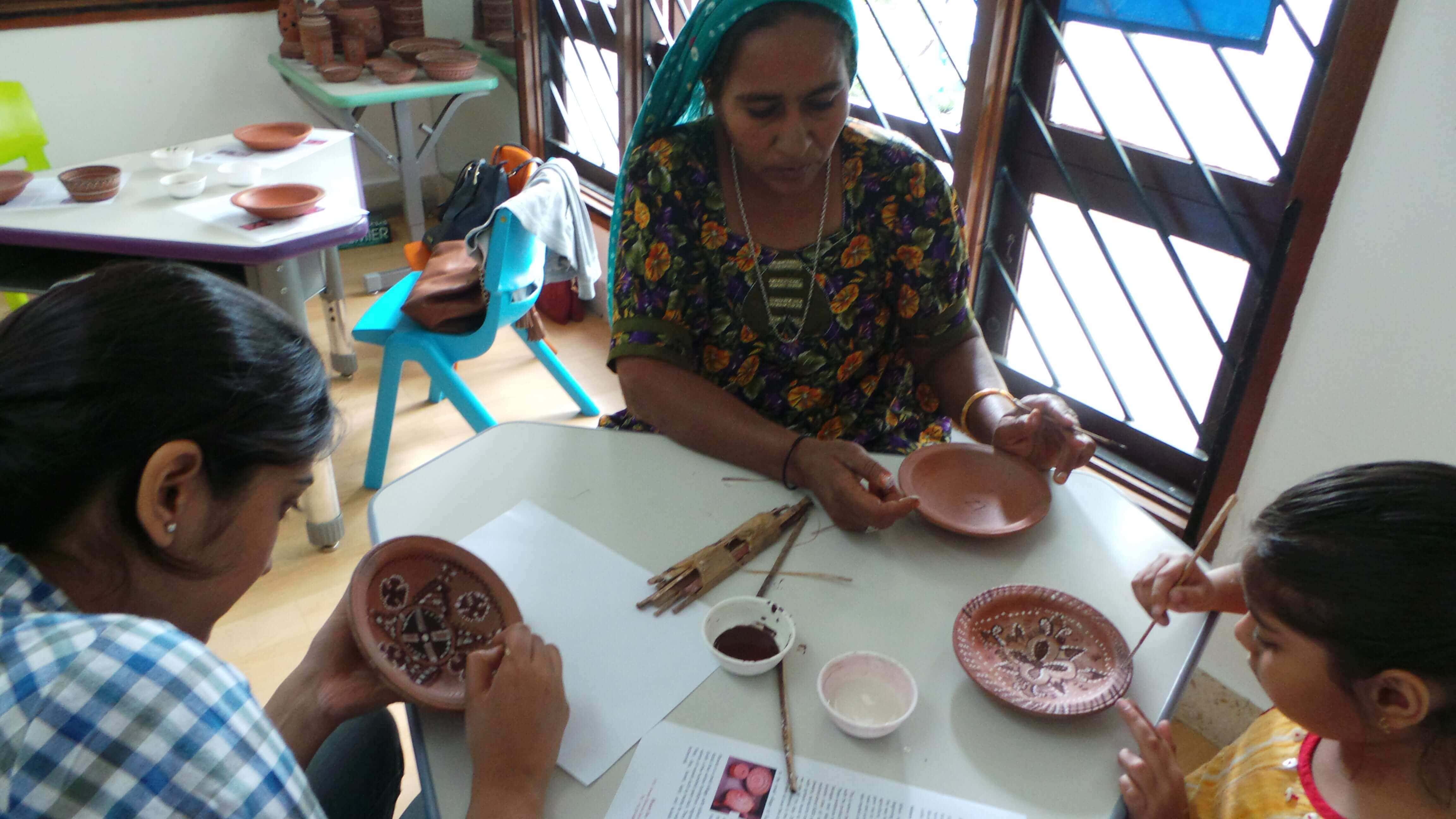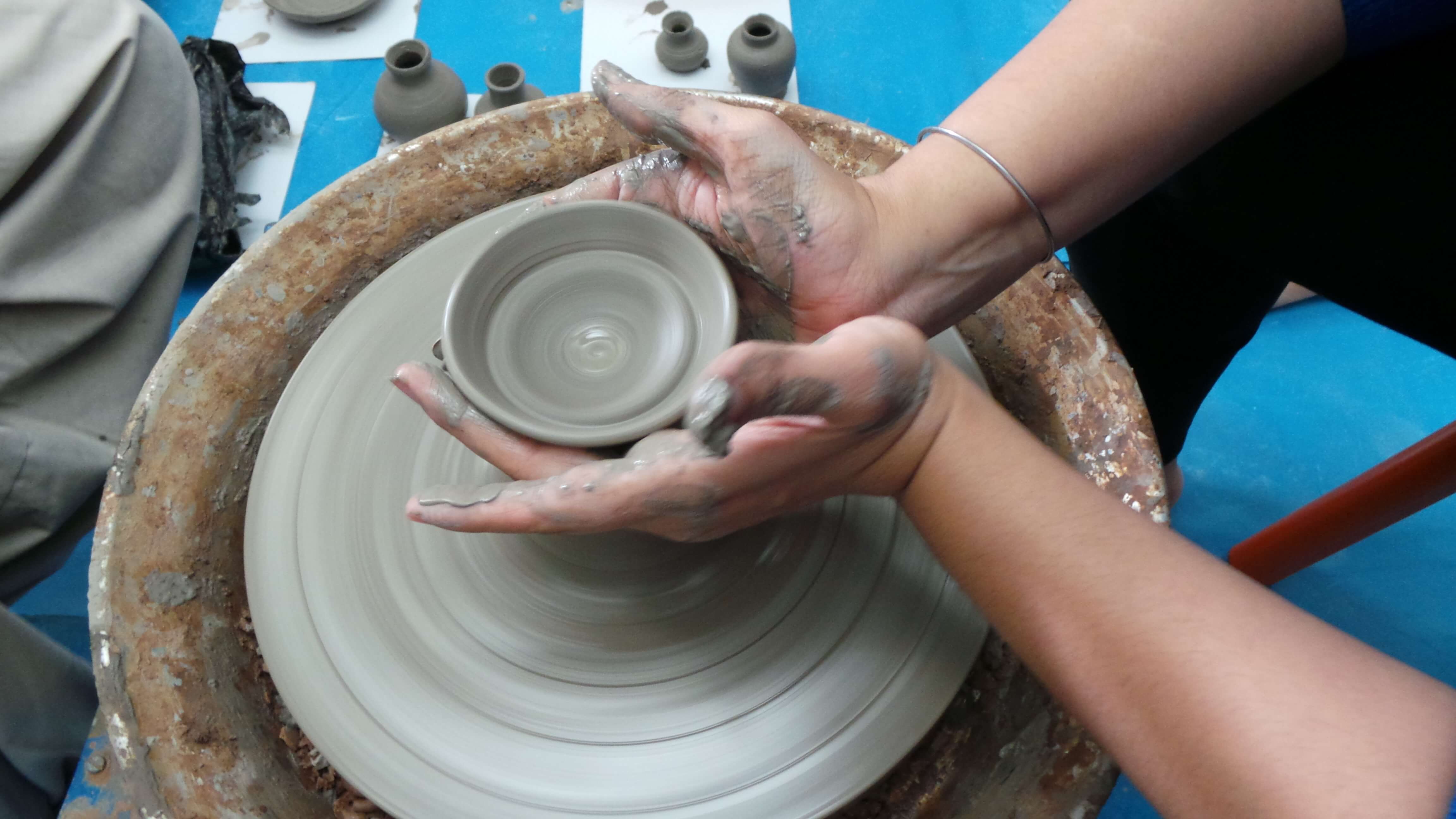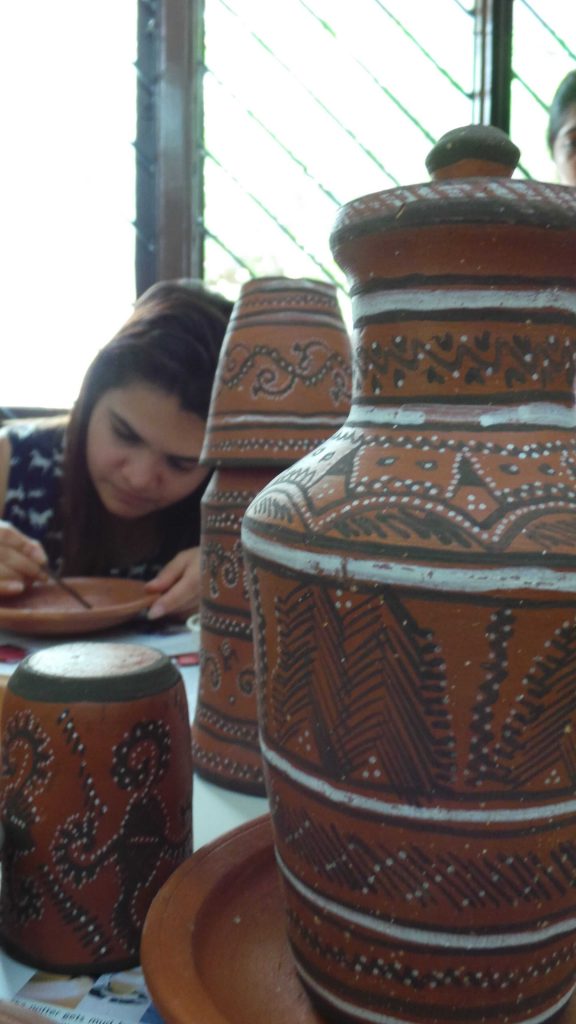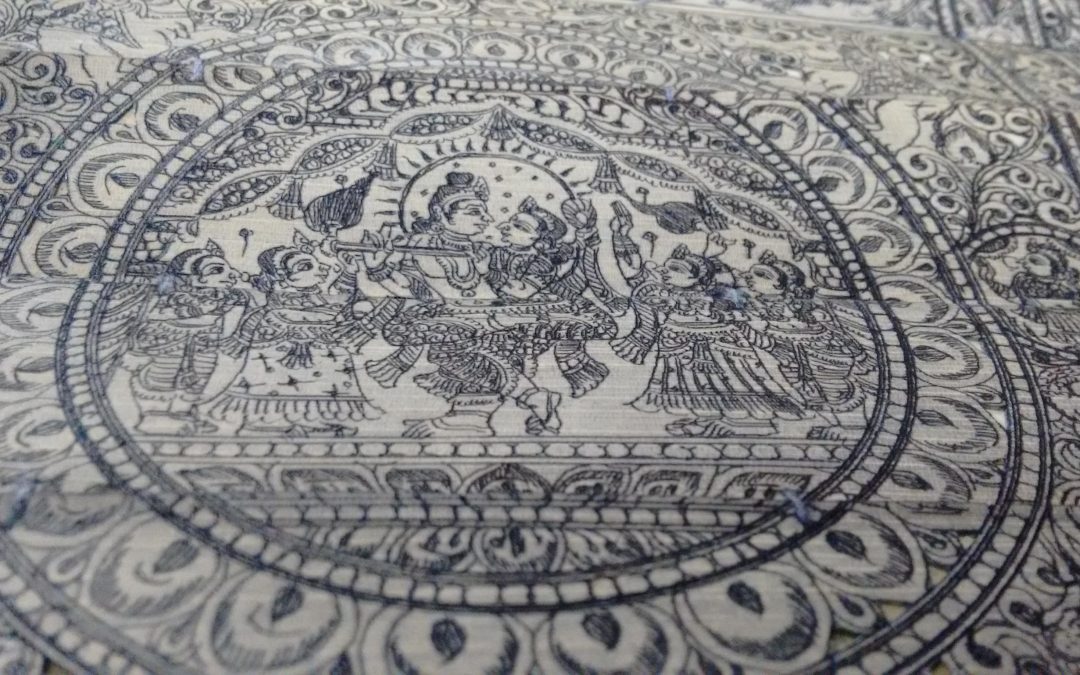
Krishna engraved on Palm Leaf
Let us explore together.
Palm leaf being used as writing material is as old as writing itself. With engraving inscriptions, small illustrations were also drawn and this was when, Palm leaf engraving became an art in itself. Originating in Orissa, mainly being practiced in Cuttack and Puri, the figures in Orissa art are inspired by the main deity, Lord Jagannath who is our very own Krishna. The palm leaves are cut when unripe and are prepared for the engraving. This involves a process of sun drying, wetting for 4 to 5 days and again drying in the shade. These are then stringed together through holes, to form paintings of any length. But as the breadth is constrained it goes no more than 24 inches. A sharp metal instrument is used to etch the design and engrave it. Ink is rubbed in and wiped off repeatedly to bring the etchings in relief. The ink again is a concoction of bean leaves, charcoal, oil and turmeric powder. The life of these paintings can be predicted by the Geeth Govind manuscripts by the poet JayaDeva still preserved in various museums and this was written in the 12th century. The artist Mr. Sahoo, shares an old manuscript from his collection here. Palm leaf engravings are best hung without glass and in 3 to 4 years of making, it changes colour to a golden yellow which is a natural process. And the best part – it is maintenance free. The cost of the painting depends on the experience of the artist and the amount of work on it. This art is called Talapatrachitra or Chitrapothi.
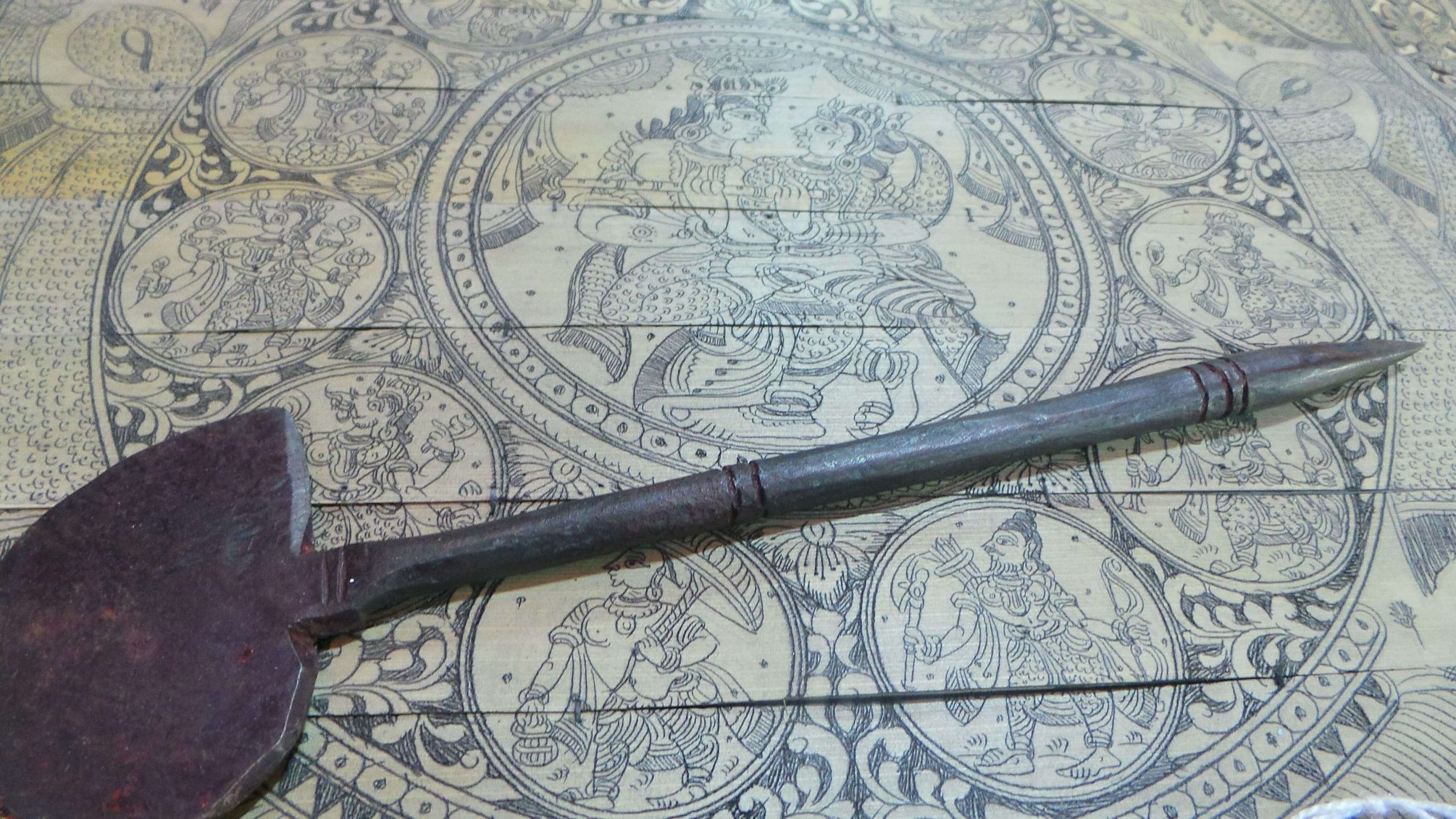
Sharp instrument used for Palm leaf engraving
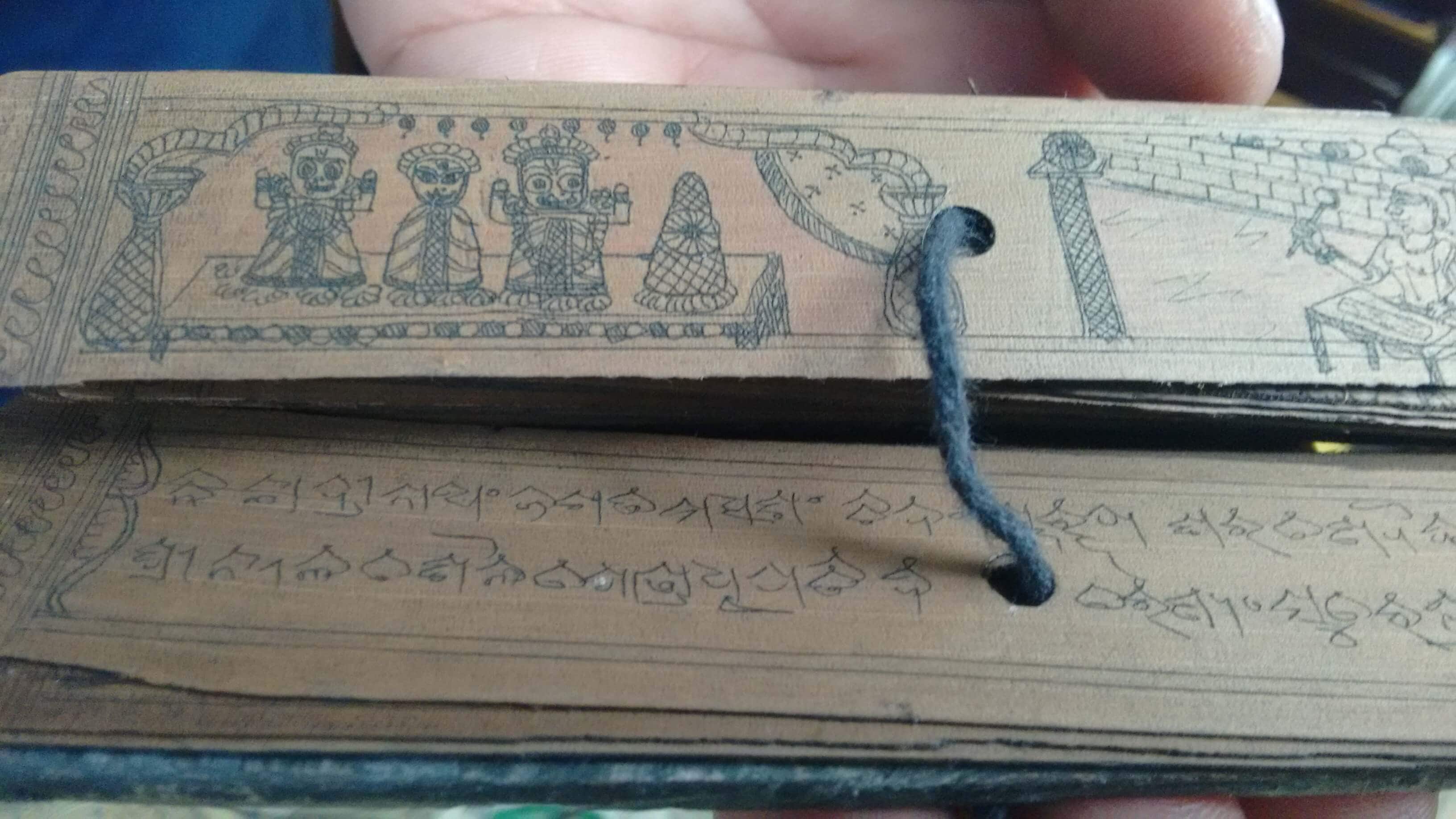
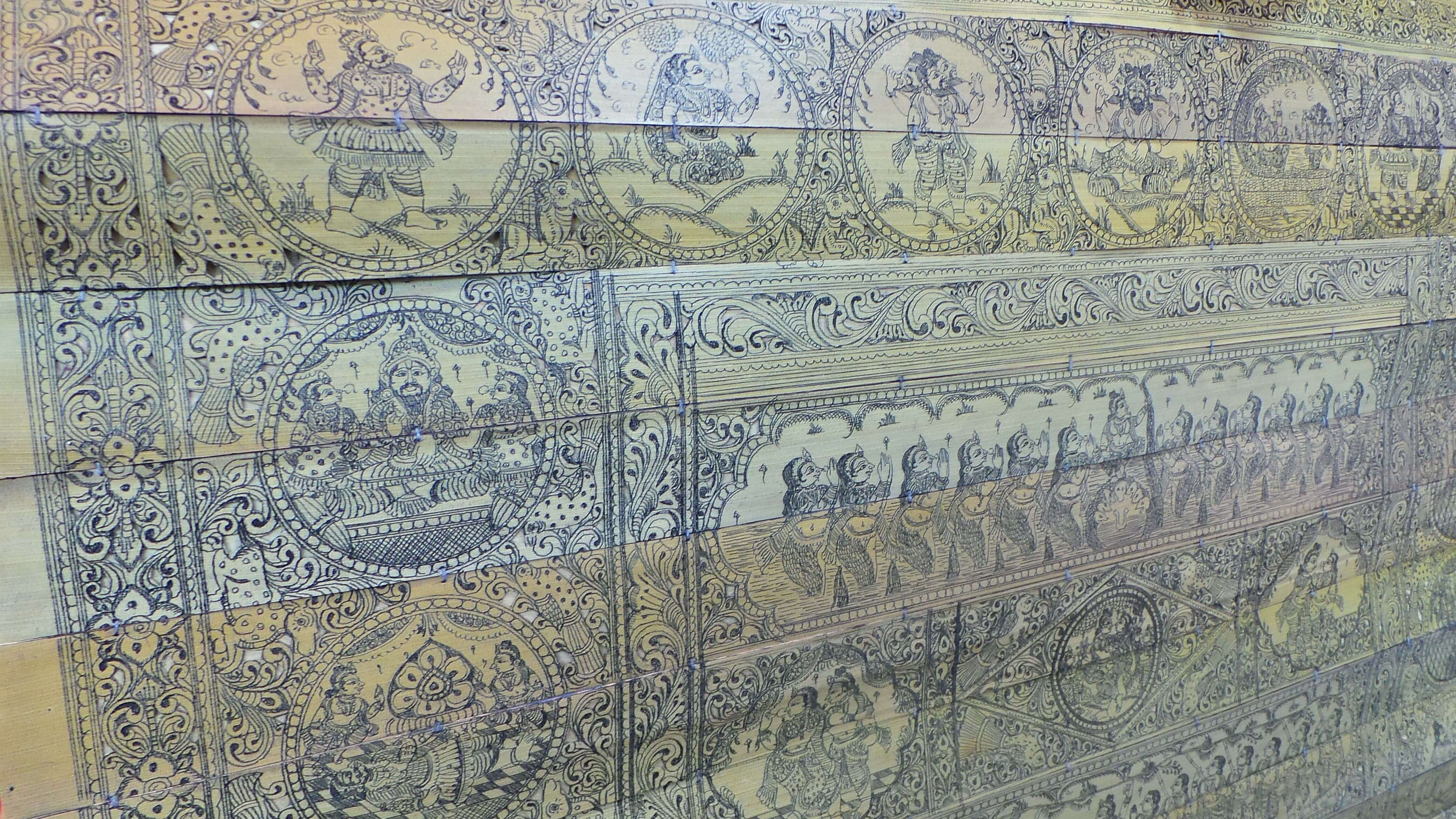
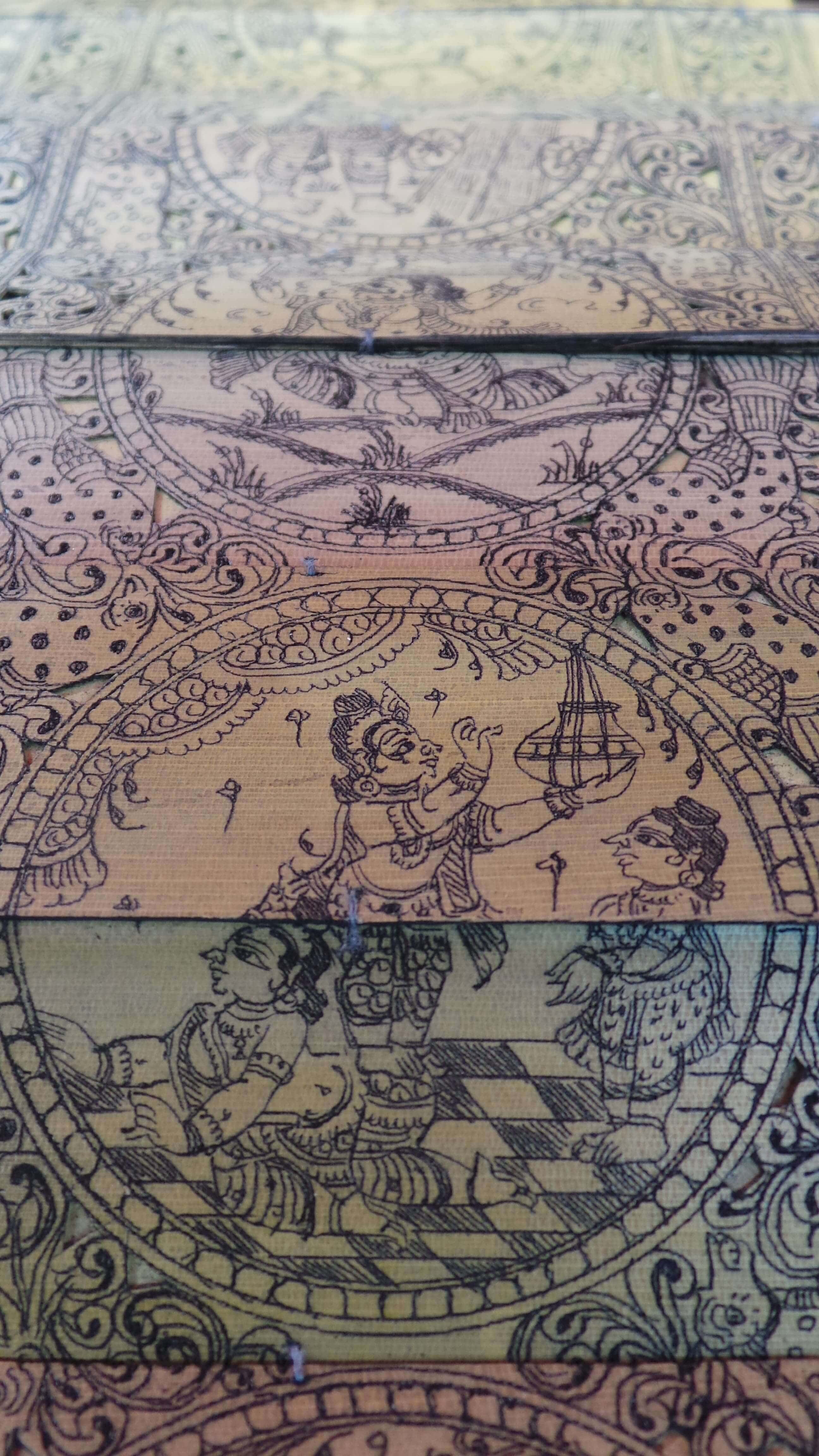
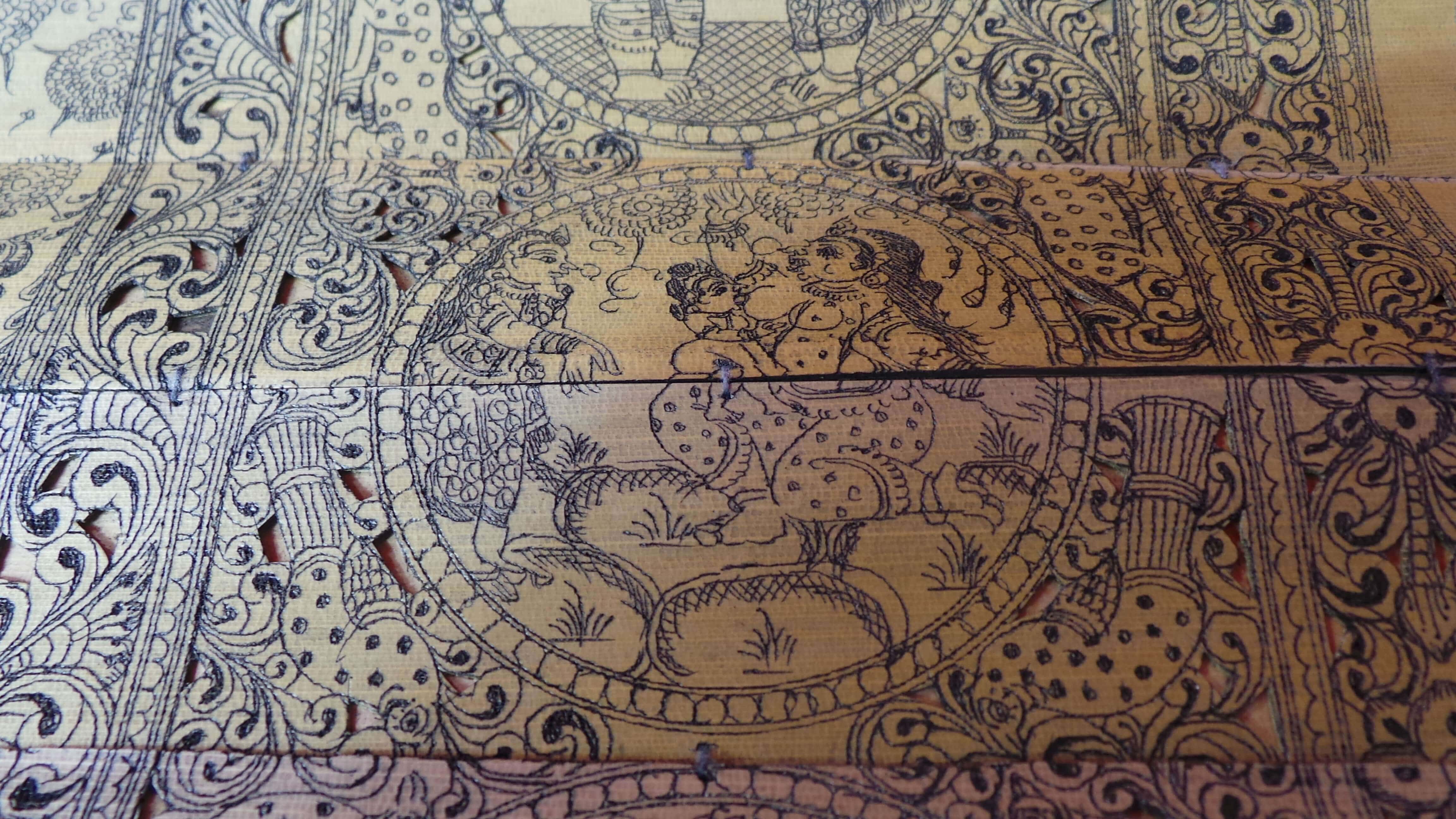
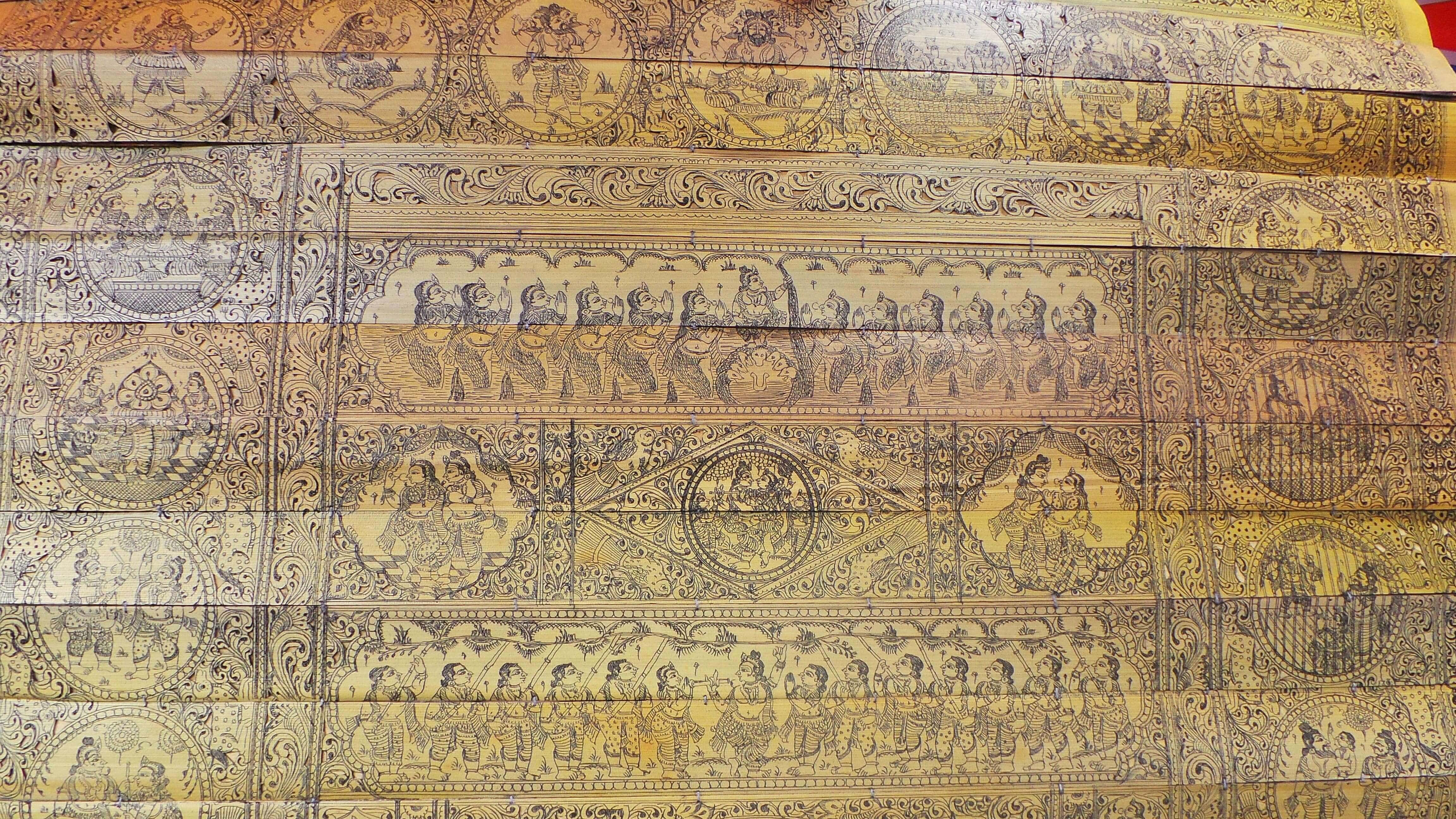


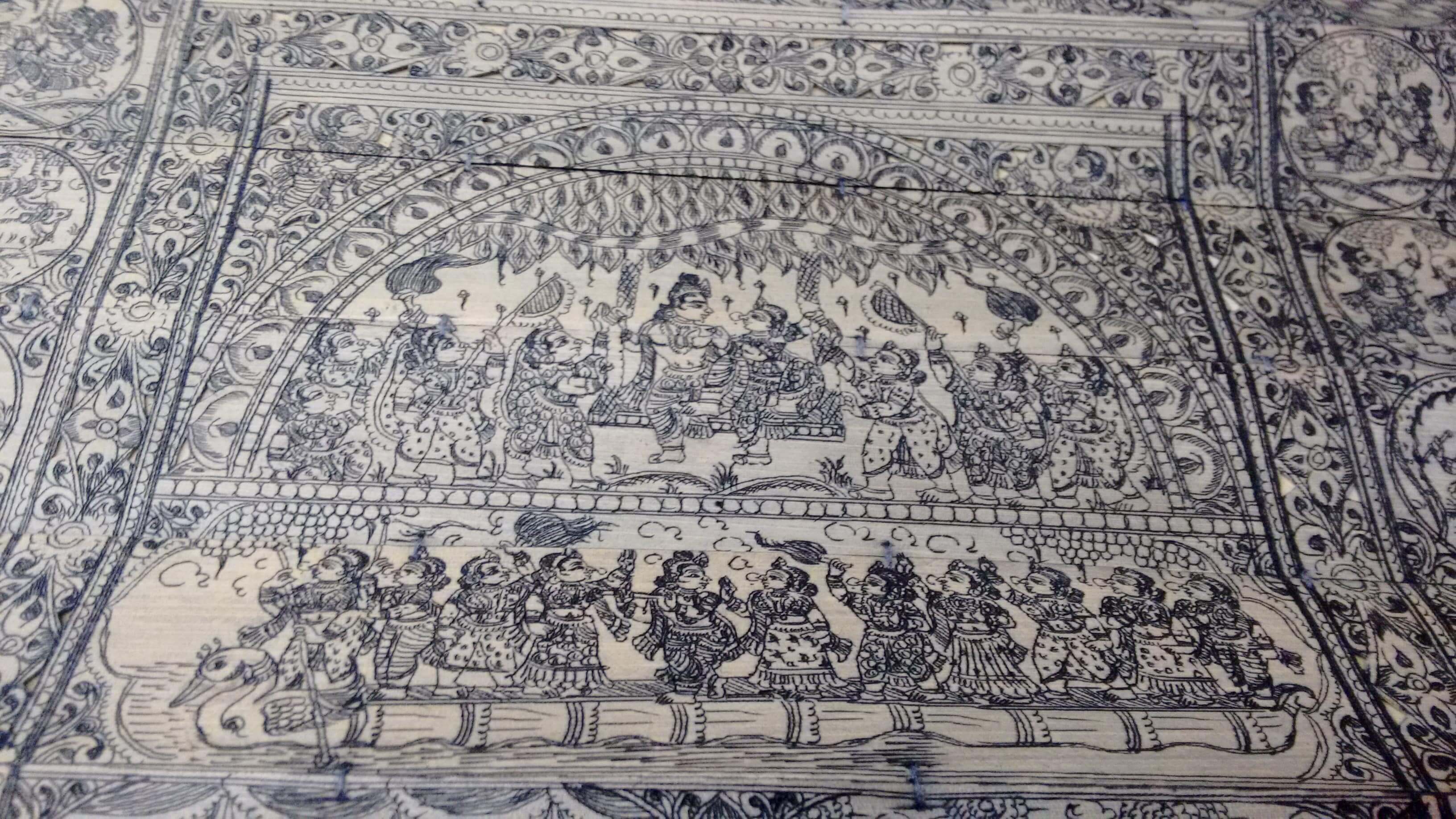
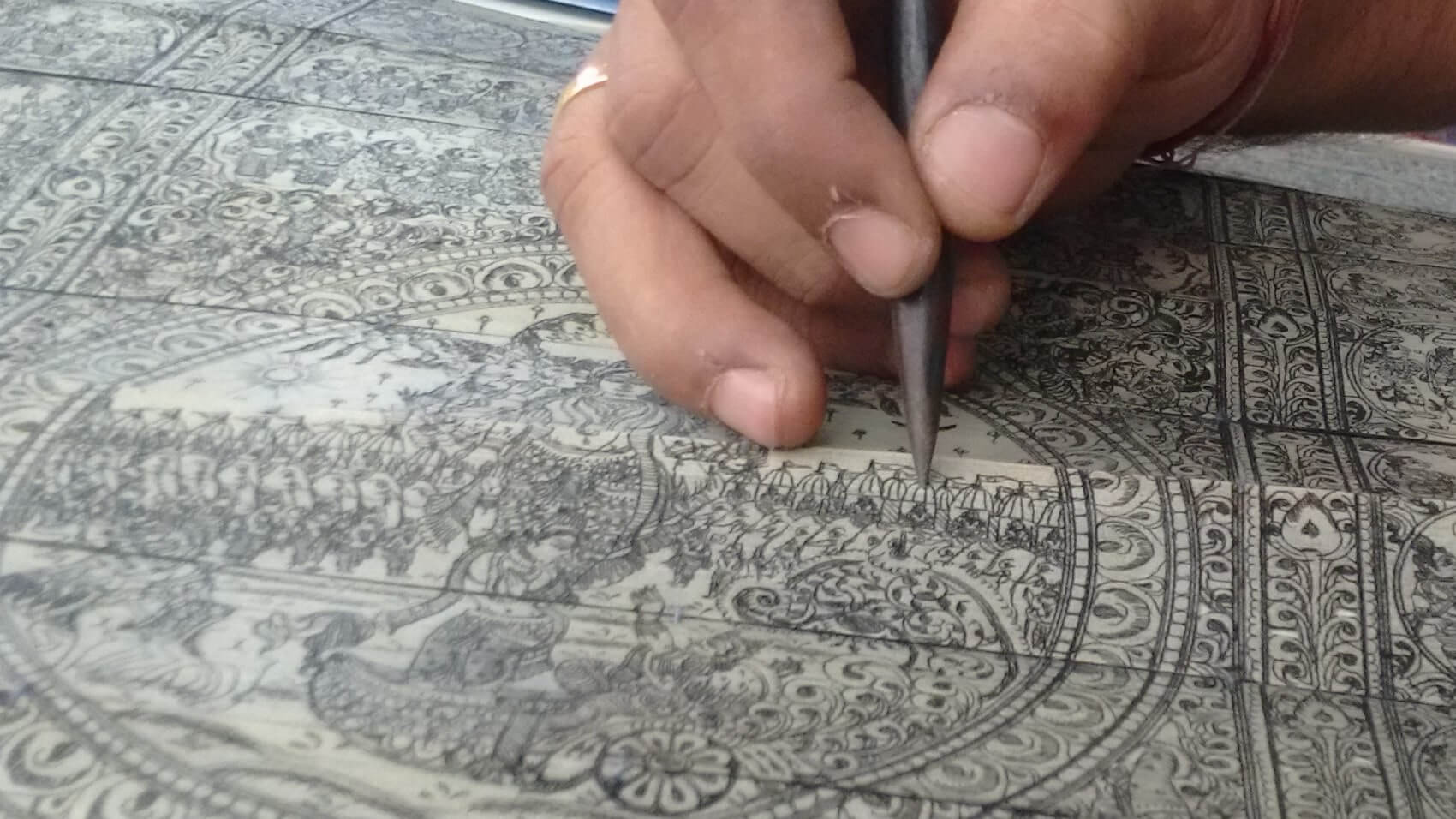
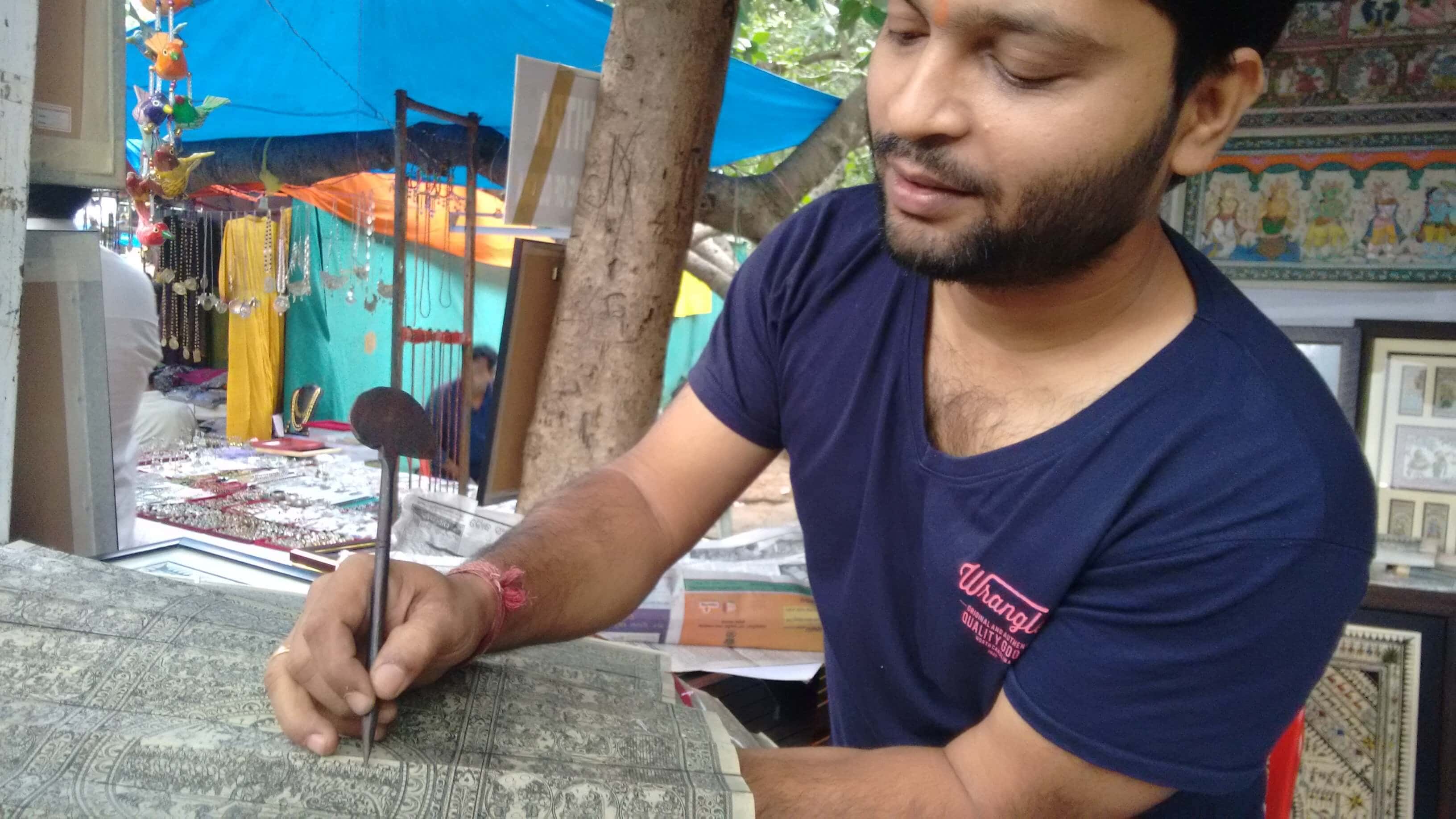
And Twinkles to all of you. Have a great week.
Anupama
Note- Mr Debasish Sahoo
Prashanthi Handicrafts, Opp Kedar Gouri Temple,
Old Town, Bhubaneswar,Odisha

